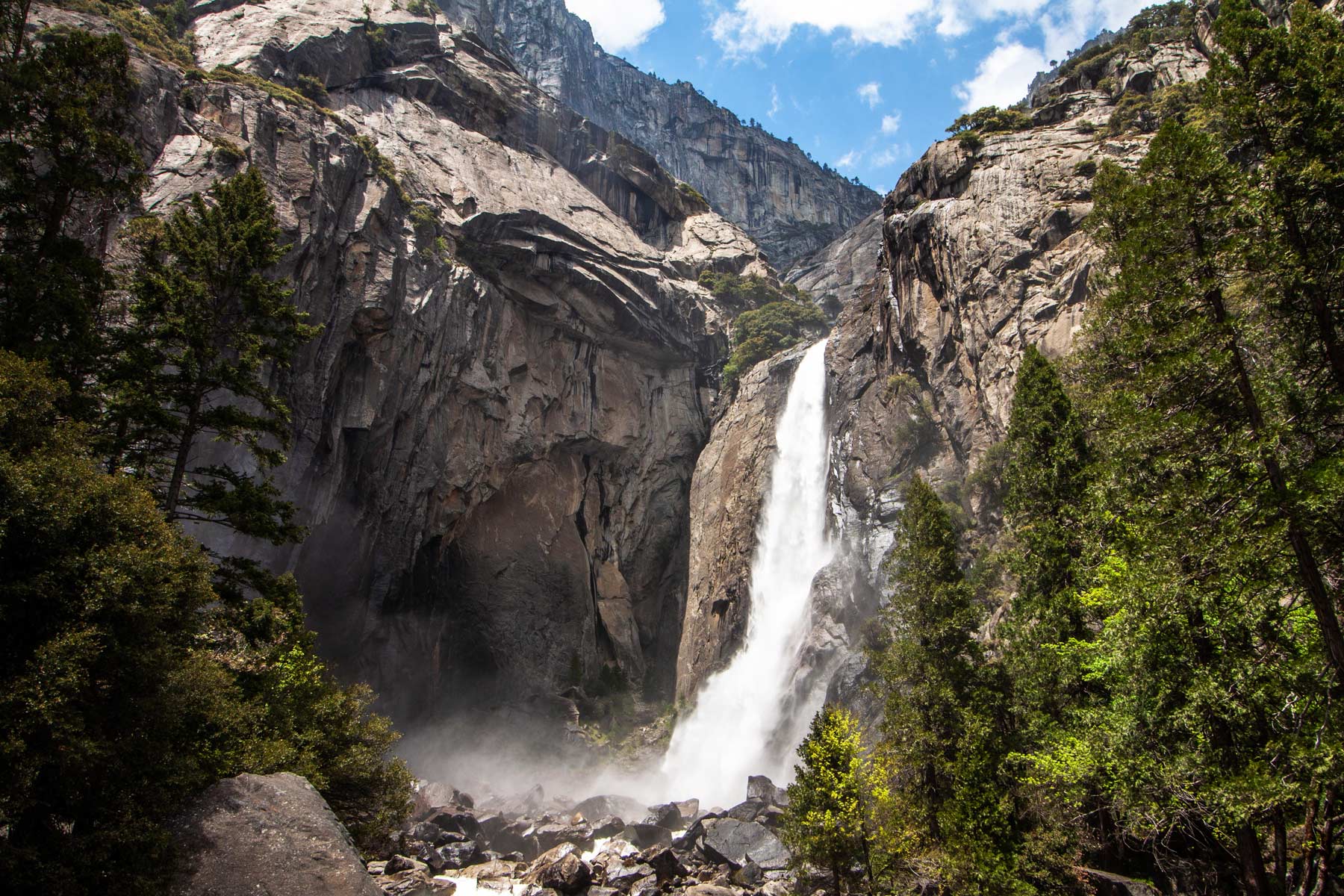
Article Overview: Yosemite Itinerary
The “Father of National Parks,” John Muir, looked over what would become Yosemite National Park and said, “It is by far the grandest of all the special temples of Nature I was ever permitted to enter.” That still holds true 155 years later. Your trip to Yosemite National Park will no doubt leave you just as enamored, but where do you start?
Yosemite was pure magic on my first visit. It was like walking into a world where everything was bigger, more magnificent. As I craned my neck to see Yosemite Falls, a ranger said, “You know there’s a rainbow there sometimes at night. It’s called a moonbow.” I smiled politely, internally convincing myself he was messing with me. He wasn’t.
Every fantastical thing I could imagine in the outdoor world seamlessly blends at Yosemite National Park. The glacially carved landscape is explained through every stop while visiting Yosemite. I hope my guidance can help you find just as much magic and unravel some secrets of Yosemite.
The story is, a man came up to Yosemite and the ranger was sitting at the front gate and the man said, “I’ve only got one hour to see Yosemite. If you only had one hour to see Yosemite, what would you do?” And the ranger said, “Well, I’d go right over there, and I’d sit on that rock, and I’d cry.” – Nevada Barr, Author
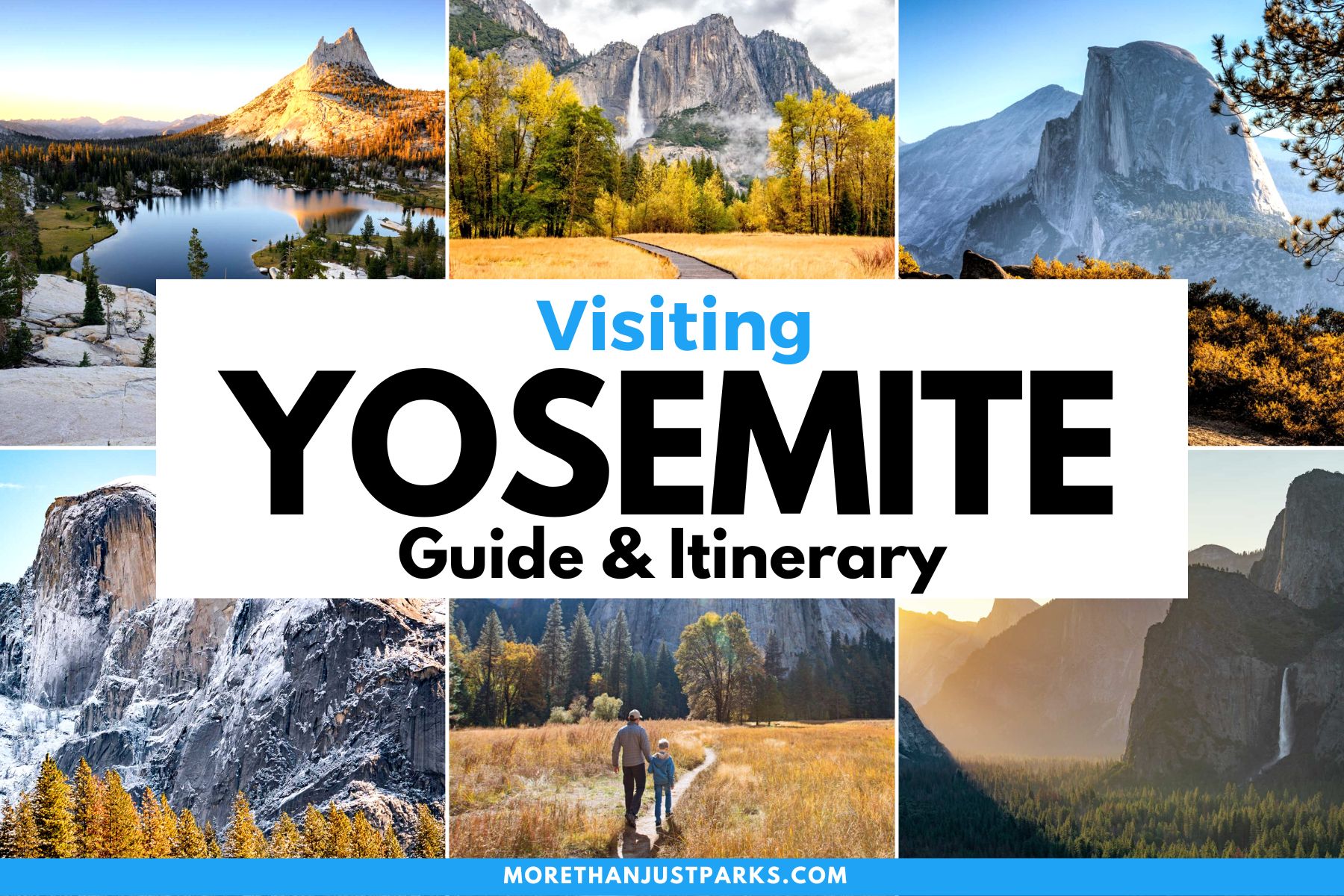
Table of Contents: Yosemite Itinerary
Yosemite Itinerary
- 5 Yosemite Things to Know Before You Go
- Yosemite National Park Entrances
- Arch Rock Entrance (Year-Round): West Side, Closest to Merced
- Big Oak Flat Entrance (Year Round): West Side, Closest to Modesto
- Hetch Hetchy Entrance (Year-Round with Seasonal Closures): NW Side, Access Only from West
- South Entrance (Year Round): South Side, Closest to Fresno
- Tioga Pass Entrance (Closed November – Late May/Early June): East side, Closest to Lake Tahoe
- 1 Day Yosemite Itinerary
- 2 Day Yosemite Itinerary
- 3 Day Yosemite Itinerary
- 4 Day Yosemite Itinerary
- 5 Day Yosemite Itinerary
- Yosemite Must-Have Apps
- Yosemite By Season
- Yosemite Terms to Know
- Top Things to Do in Yosemite
- Accessible and Limited Mobility Options
5 Yosemite Things to Know Before You Go
- Entrance fees are $35 per vehicle or $20 per person. That pass is valid for seven days in a row. New in 2024, reservations are required for certain dates in February and mid-April through late October. Some dates only require reservations during the busiest hours.
- Spotty mobile service means you’ll want a Yosemite National Park map and guidebook. Google Maps also allows you to download maps when you’re connected to use offline.
- Bear spray is NOT allowed in Yosemite National Park. Each park determines its own bear spray safety rules. Learn why from the park rangers. Bug spray is allowed.
- Lodging in and around Yosemite is plentiful. This is our favorite hotel in Yosemite National Park. It’s great for families and larger groups and is open year-round. You can’t beat the location. For a more upscale option, The Ahwahnee can’t be beaten!
- Tioga Road and Glacier Point Road close for the winter (and early spring), with closing dates in November and opening dates in May or June.
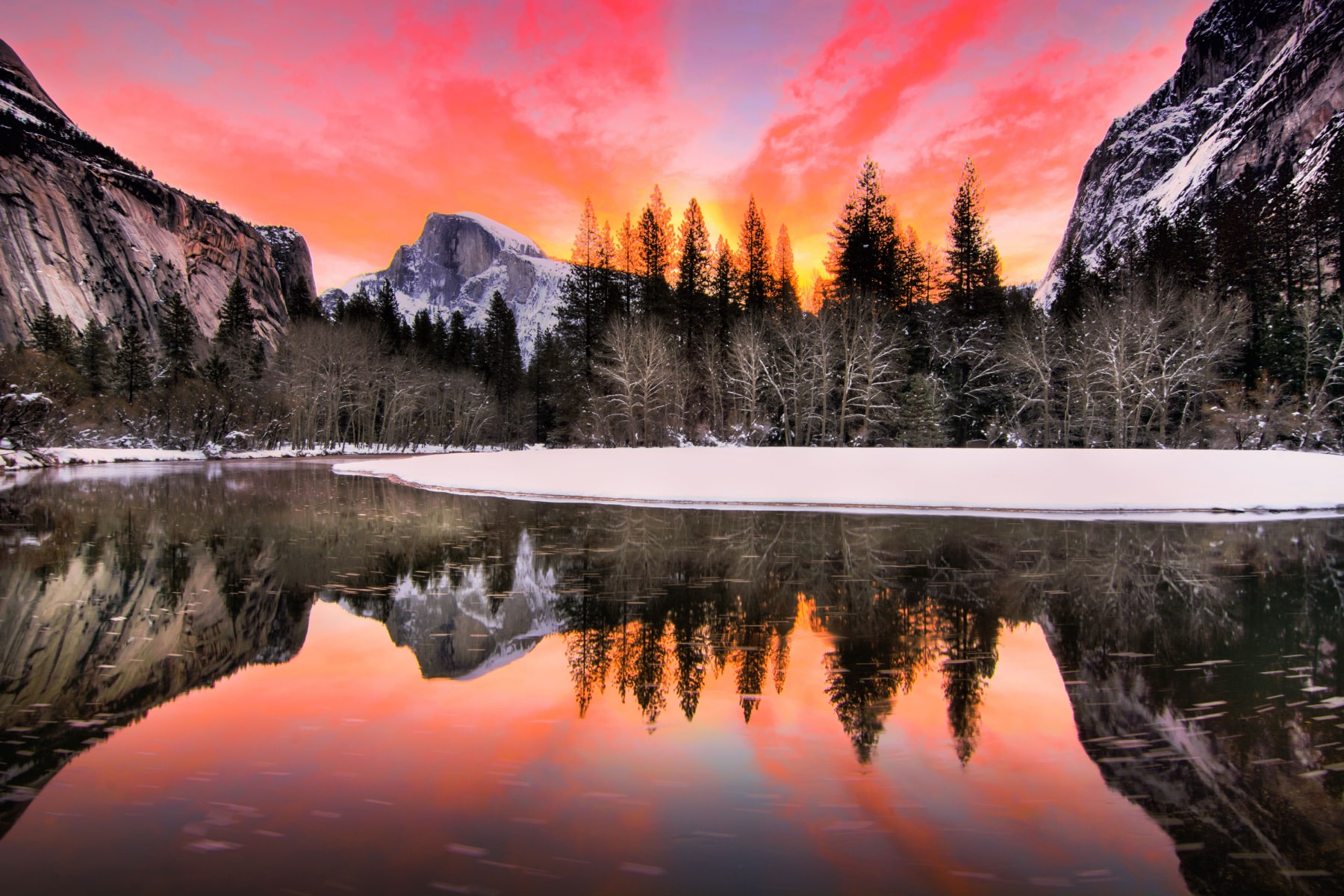
Yosemite National Park Entrances
Yosemite has five entrances to choose from, though one is much more remote with limited amenities, and another is closed for seven months.
Arch Rock Entrance (Year-Round): West Side, Closest to Merced
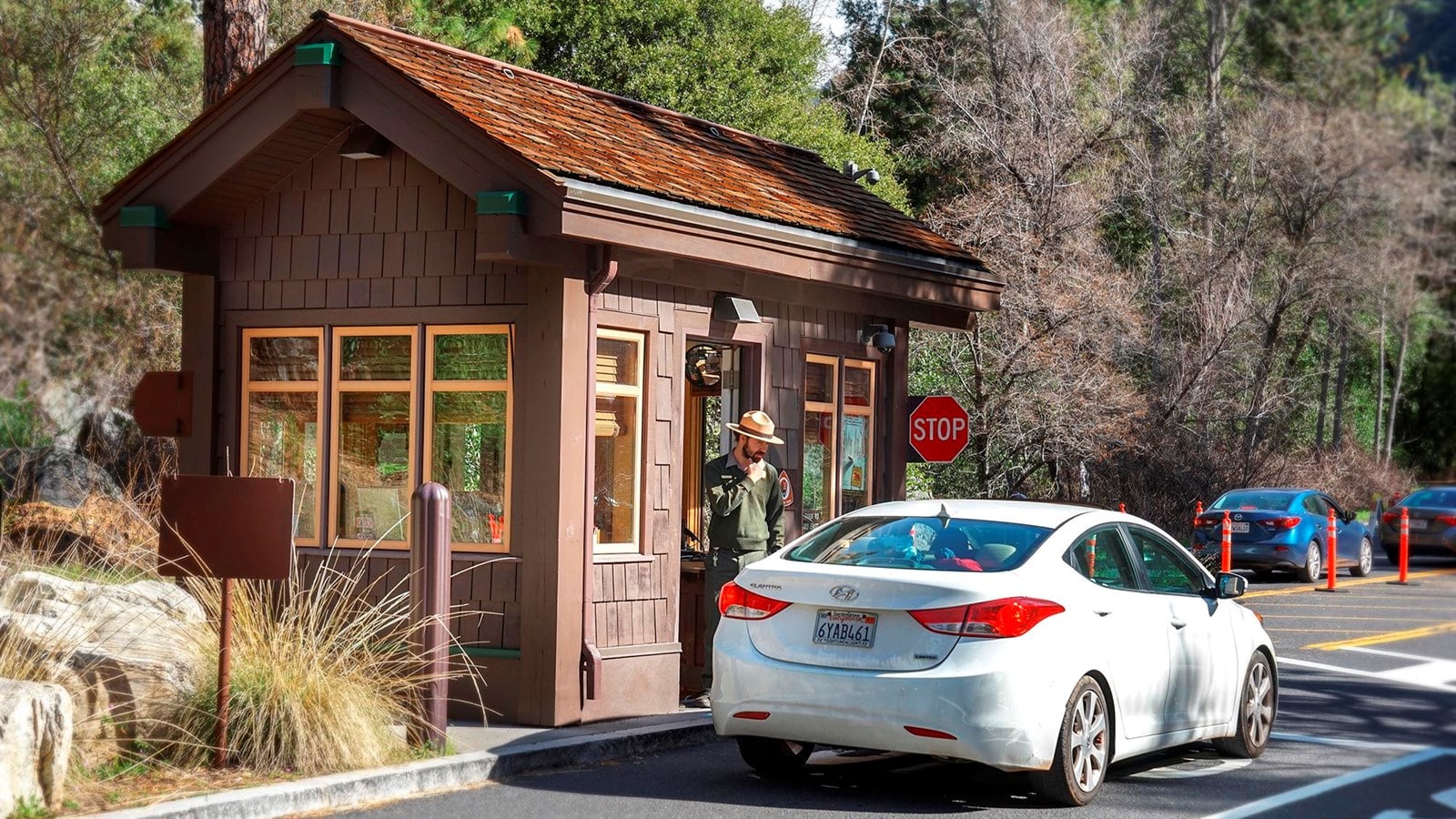
This is one of the busiest entrances on Highway 140. You can get to Yosemite Village in less than 30 minutes (traffic dependent).
Big Oak Flat Entrance (Year Round): West Side, Closest to Modesto
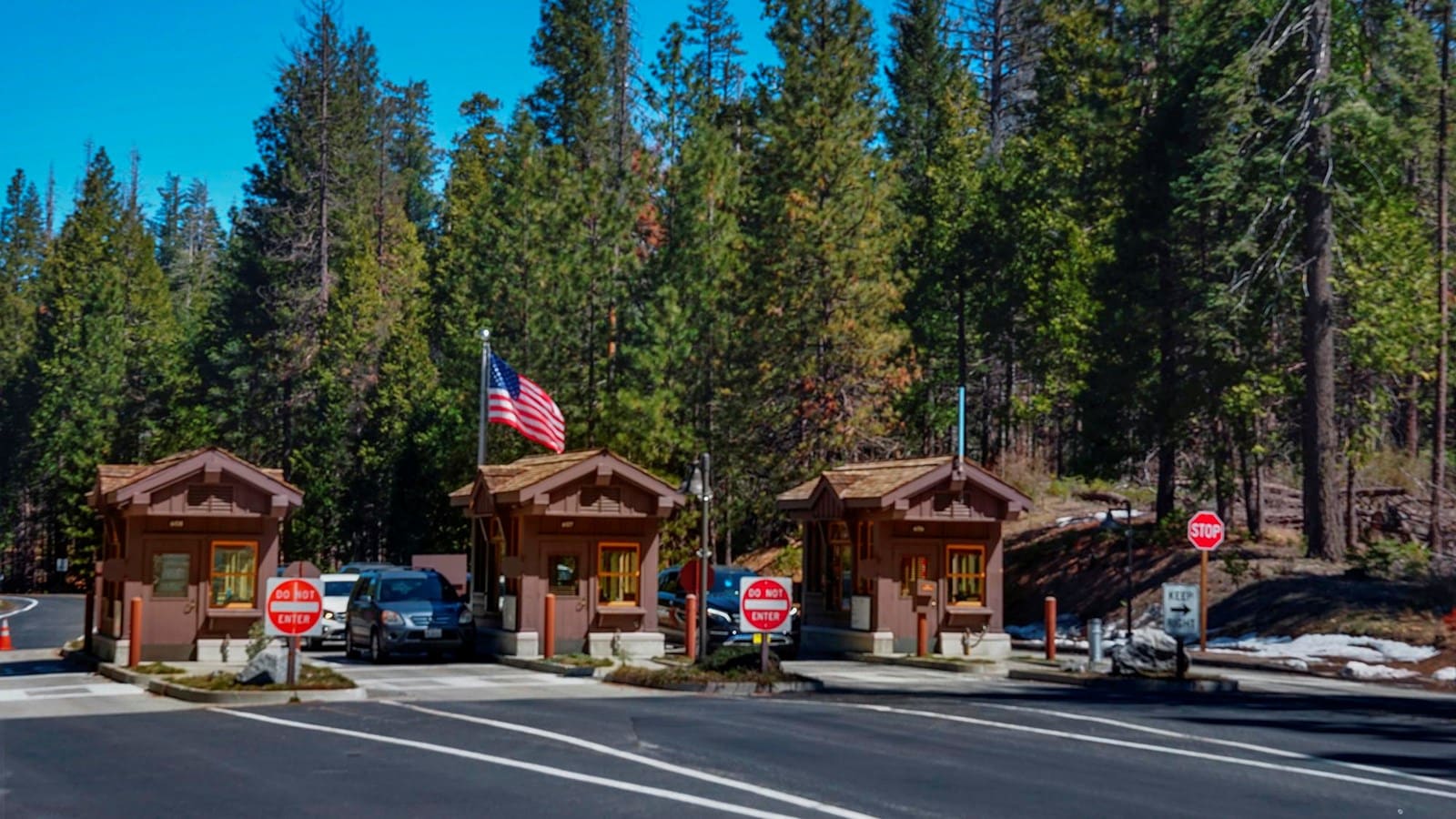
This entrance at Big Oak gives access to the highest parts of the park on Highway 120, which turns into Tioga Road. Check closure information as summer 2023 kicked off with this entrance road closed due to cracking.
Hetch Hetchy Entrance (Year-Round with Seasonal Closures): NW Side, Access Only from West
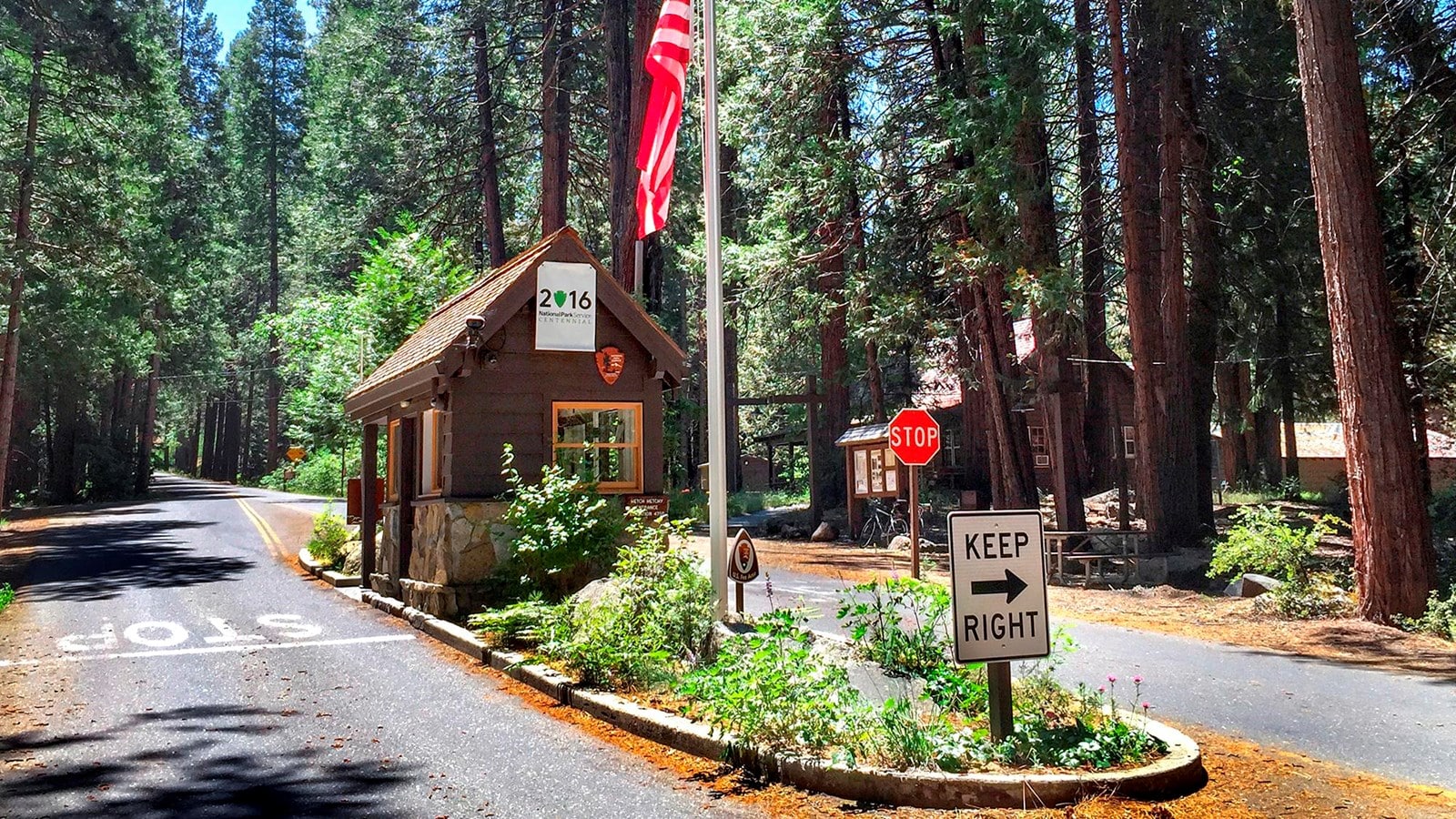
From 120, you’ll take Evergreen Road and then Hetch Hetchy Road. This is a narrow, poorly marked stretch of road that is only open during daylight hours. Access only to the reservoir and hiking trails of Hetch Hetchy.
South Entrance (Year Round): South Side, Closest to Fresno
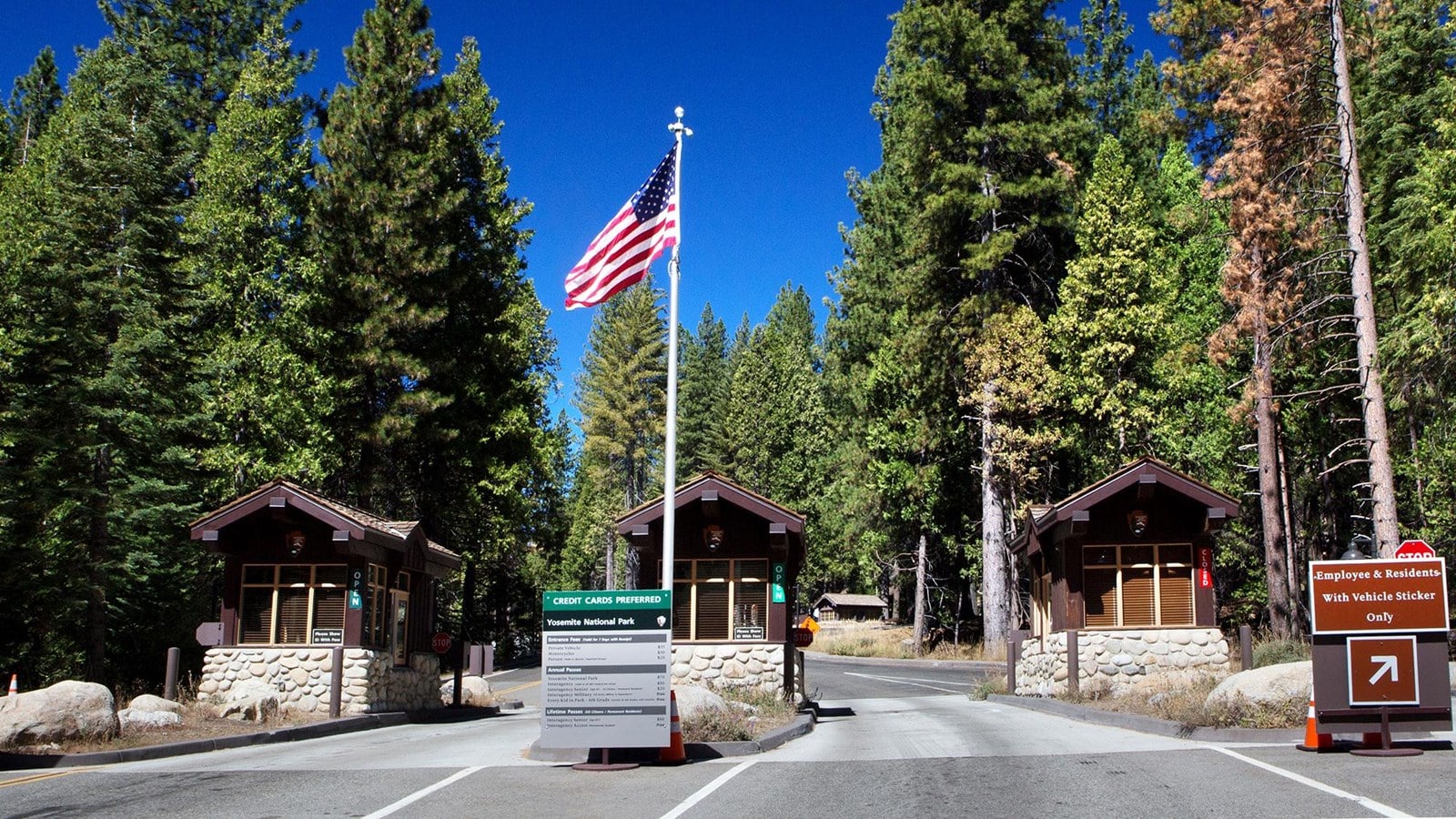
This is another busy entrance off Highway 41. This entrance provides access to Yosemite Valley, Glacier Point, Wawona, and Mariposa Grove.
Tioga Pass Entrance (Closed November – Late May/Early June): East side, Closest to Lake Tahoe
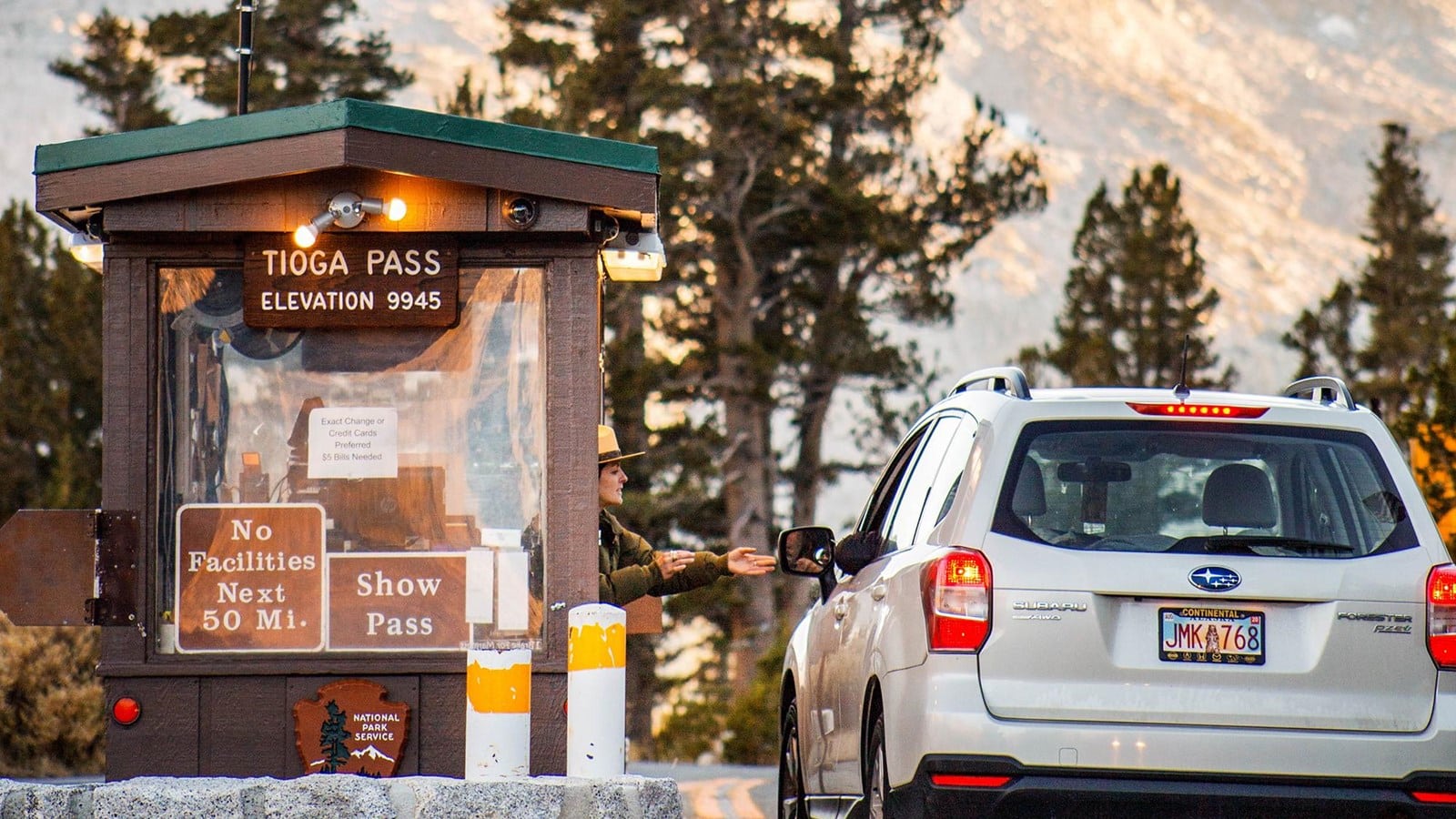
You approach this section of Highway 120 from the east. Due to heavy snowfall and other winter weather, this entrance closes in November until the snow is gone, usually by late May. There is no other east entrance to the park in winter.
1 Day Yosemite Itinerary
Cue Eminem’s Lose Yourself for this one, because if you only have one shot, one opportunity, to seize everything you ever wanted, in one day at Yosemite…
Since the park is open 24/7, we’re going to make the most of it.
Start the day at Tunnel View to watch the sunrise. This is ideal for those staying outside the part on the western side. Use Big Oak Flat Entrance. Glacier Point is another great spot to see the sunrise from 7,200 feet above sea level.
You should be early enough to find a parking spot at Yosemite Village, where you can spend the rest of the day exploring the different options there. You’ll see Yosemite Falls, El Capitan, and the Sentinel Meadow.
Finish the day by driving to Mariposa Grove and seeing the giant sequoias. Make a stop at the Yosemite History Center while you’re at that end of the park. You’ll be close to the south entrance to exit.
Note: If you simply must do Half Dome, it will take the entire day.
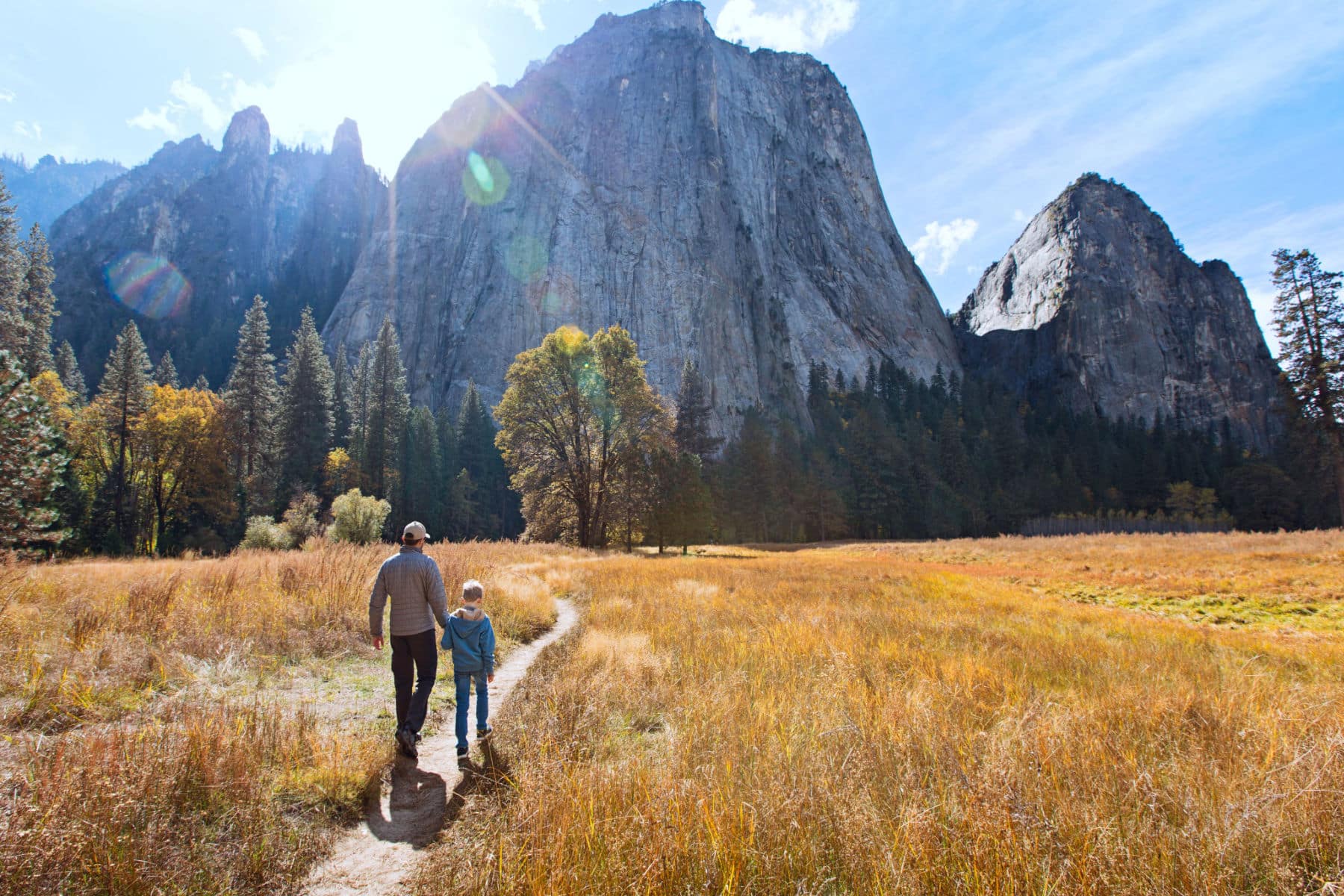
2 Day Yosemite Itinerary
With just two days, you can balance a tough-enough-for-you hike and take a day to enjoy the views.
DAY 1: Drive scenic loops, and hike to the top of Yosemite Falls or Columbia Rock. Visit the Yosemite Conservation Heritage Center. End the day with sunset at Tunnel View or Glacier Point.
DAY 2: Tackle Half Dome, which takes up to 14 hours. You can also walk the Valley Loop Trail or take shuttle stop 16 to arrive at the John Muir and Mist Trails, where you’ll get close-up views of waterfalls. Hike until you’ve reached your physical threshold.
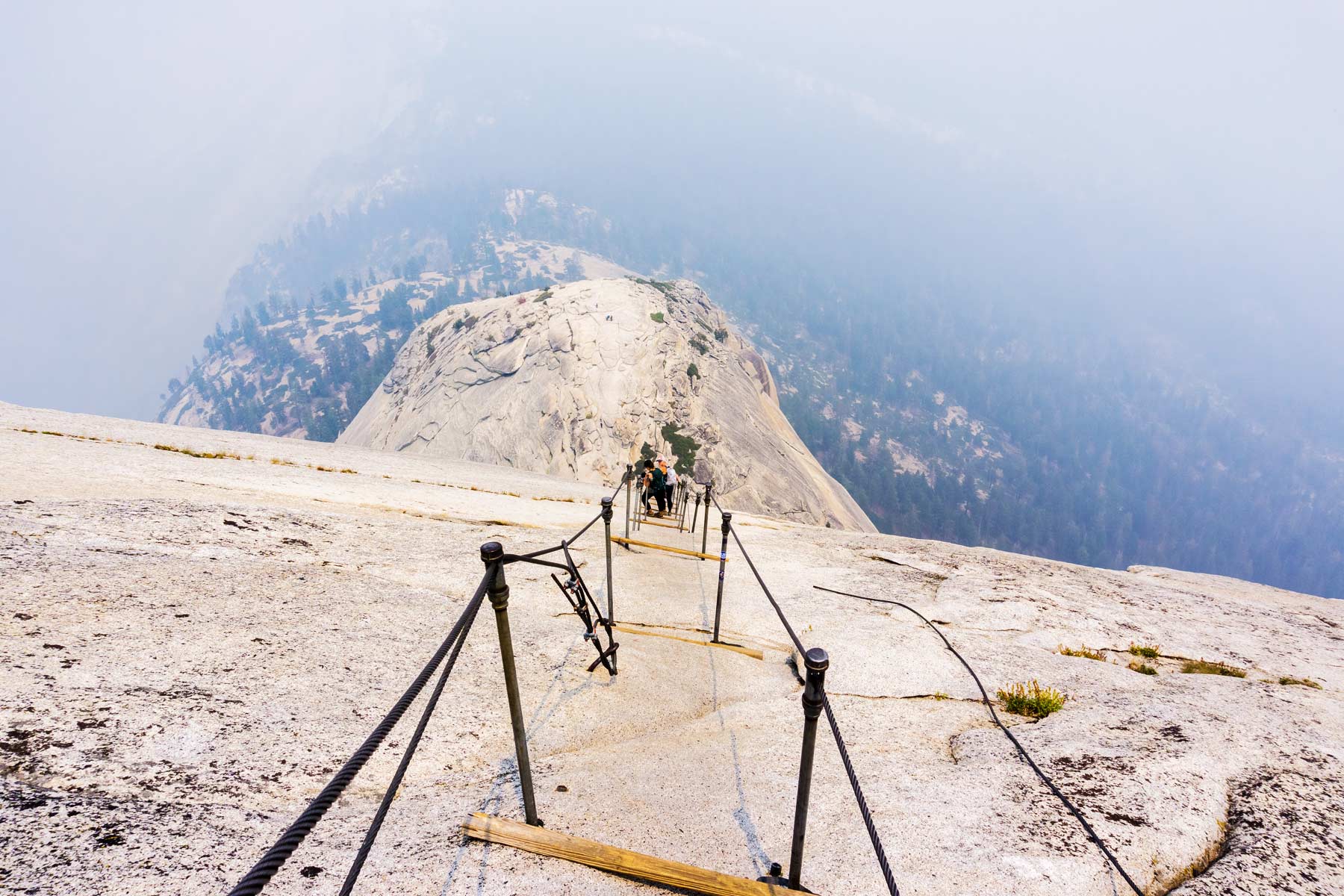
3 Day Yosemite Itinerary
If you’re staying three days, you want to give yourself the first day to adjust to the altitude, especially when you consider the bigger climbs.
DAY 1: Start the day in the sequoias near the southern entrance. Visit the Pioneer Yosemite History Center, making time for a horse-drawn carriage ride. Explore Wawona in the afternoon and take one of the hikes, depending on your skill level.
DAY 2: Take a rock climbing lesson if you’re a newbie. Explore the rock climbing options around El Capitan without tackling the Big Wall. You can also use this day to go after Half Dome, but it will take the whole day, and you’ll need that permit.
DAY 3: Hike one of the trails at Glacier Point. Ideally, you can start the day with a sunrise view here and just hit the trail after. Take the bus to the point where you can take the four-mile trip down to Yosemite Valley.
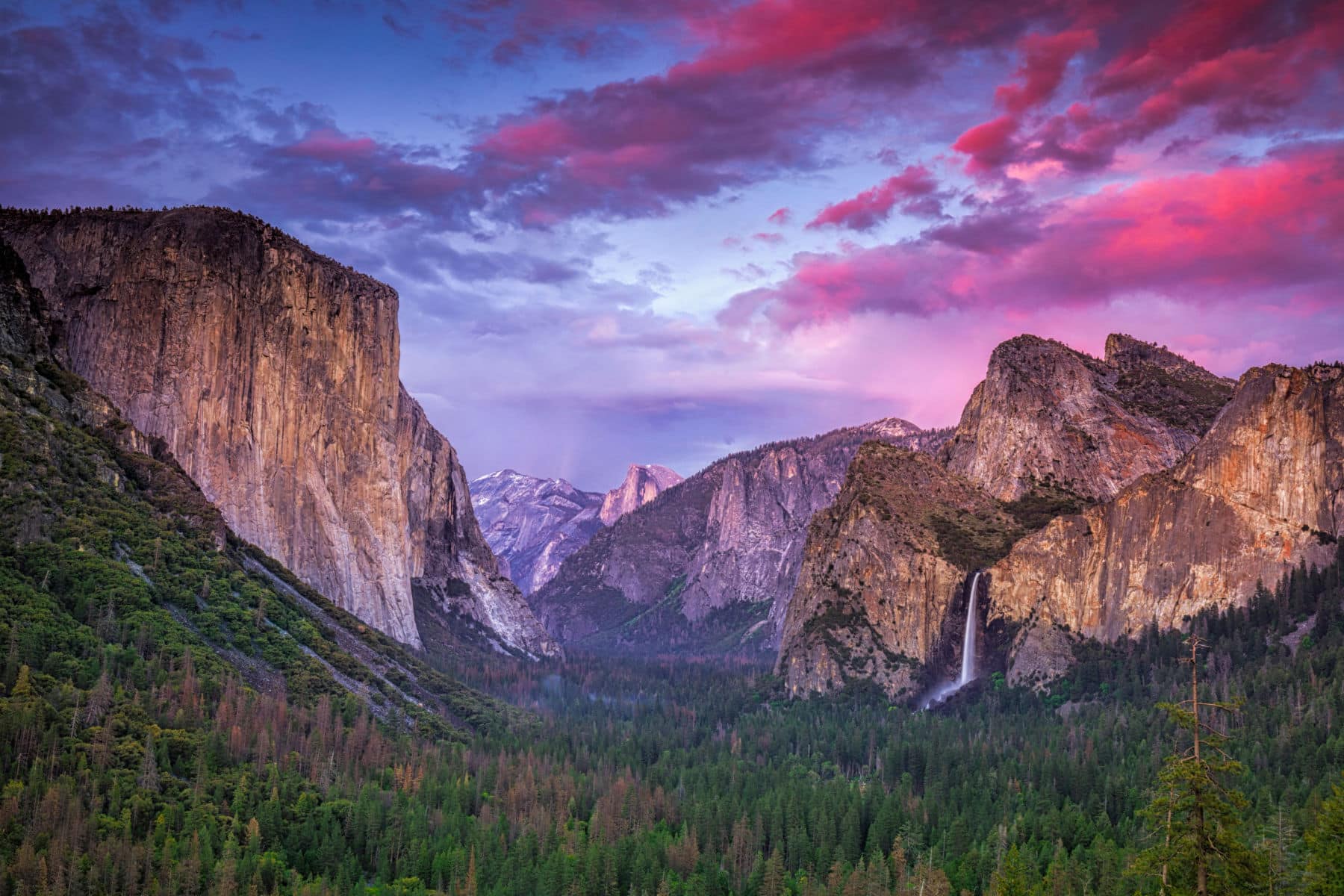
4 Day Yosemite Itinerary
You’re going to need some breathing room in this itinerary because the crowds and traffic will begin to eat away at your patience.
DAY 1: Do all the things you want to do in Yosemite Valley. On your first day, you’ll be the most excited and have the most patience. See Yosemite Falls and El Capitan, and visit the Ansel Adams gallery in the Yosemite Village.
DAY 2: Schedule a trip through one of the tour guides at the Yosemite Conservancy. The custom-tailored trip will take the pressure off you to find your way around, and even in crowds or traffic, you’ll be getting expert feedback and education from people who know this area best.
DAY 3: Head to Hetch Hetchy and explore the trails, but don’t arrive before the sun comes up. It’s only open during daylight. Here you can spend a day hiking, fishing, and looking for wildlife. Birding is especially popular here. You can also add a five-mile hike to Lake Eleanor, which still bears scars from the Rim Fire in 2013.
DAY 4: Take the five-mile hike on the Pohono Trail through Taft Point and Sentinel Dome. Explore the museum(s) of your choice, making the Pioneer Yosemite History Center a priority. Finish the day in Mariposa Grove.
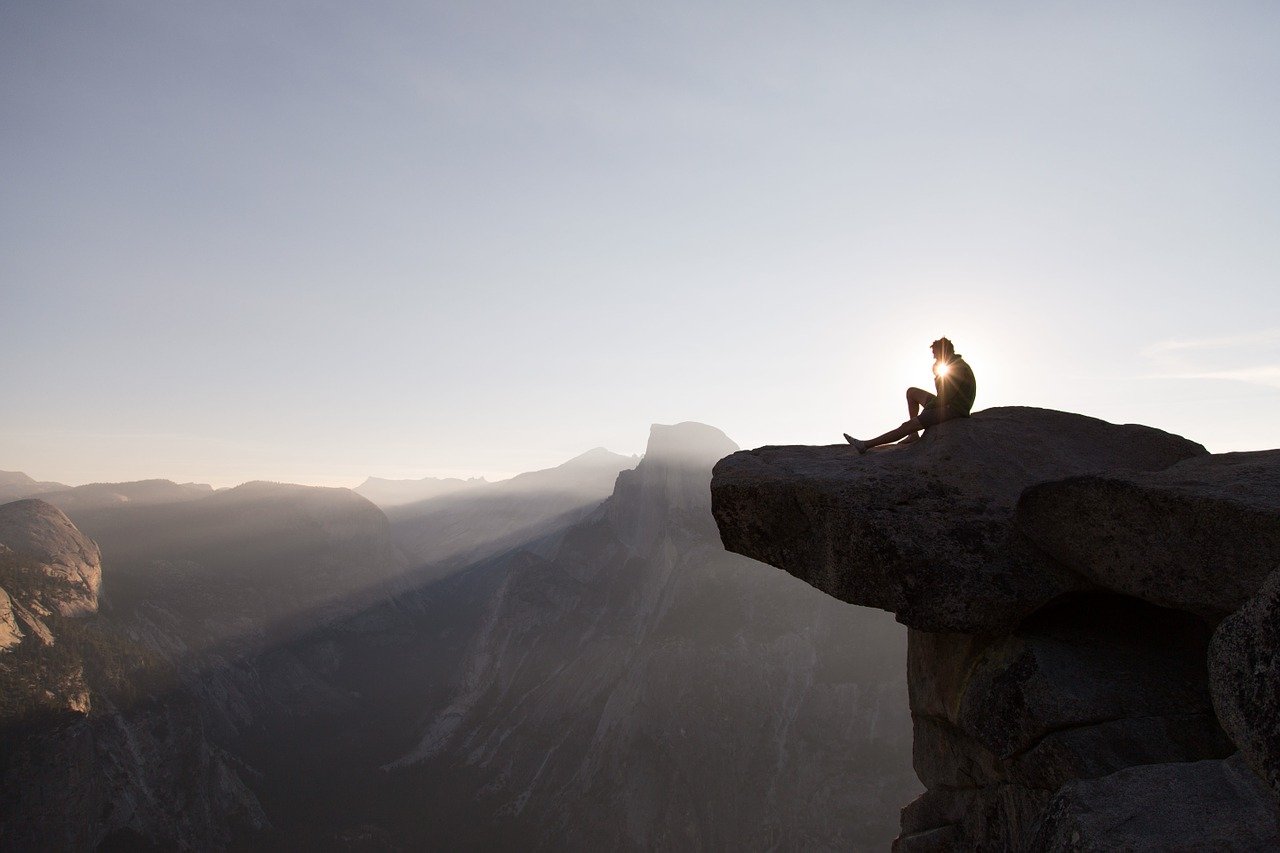
5 Day Yosemite Itinerary
You can accomplish a lot in five days, but you don’t want to burn out too quickly.
DAY 1: Get a Half Dome permit for the first day since any weather cancellations still give you a chance to apply for a daily permit. Finish the night watching the climber on El Capitan settle in for the night and enjoy the sunset bouncing off the rocks. Choose one of the many park campsites to stay overnight.
DAY 2: Get a sunrise view at your favorite spot, but I love the Tunnel View for all the dimensions of sunrise offered. Get to Yosemite Village early. Stop at the Wilderness Education Center to help plan your day based on closures or weather risks.
DAY 3: Tackle Tenaya Canyon and pray the curse isn’t real. Canyoneering is required here, so don’t attempt it if you’re a first-timer. Finish the day at Hetch Hetchy.
DAY 4: Head for the sequoias at Mariposa Grove and explore the history center, Wawona, and Wawona Dome if you’re a skilled rock climber. Take a drive to Glacier Point for the sunset and walk among the trails there.
DAY 5: Take the final day to relax at one of the few lakes available. Mirror Lake offers stunning reflections of Half Dome and the mountains. Tenaya Lake is great for a smooth kayak ride on the water. Avoid the sunset crowds at the Tunnel View and head to Inspiration Point. Enjoy the night skies.
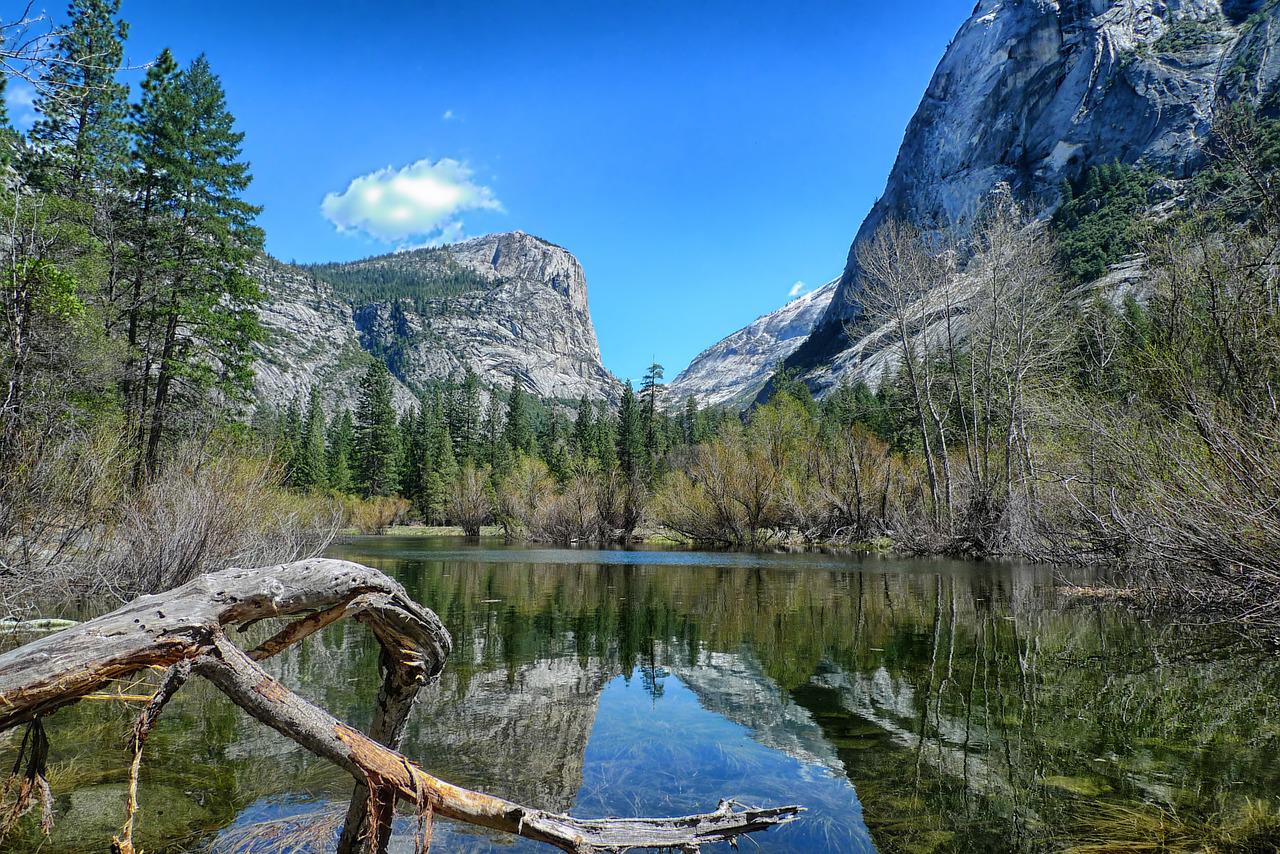
Yosemite Must-Have Apps
You need to start planning your trip or tweaking your itinerary with the help of a few apps and websites.
- National Park Service (NPS) App: Get park alerts, access interactive maps, find the closest bathroom, and more.
- InciWeb: Track wildfires, prescribed burns, and fire dangers across Yosemite Valley (and everywhere else!).
- National Weather Service: Park weather updates come right from NWS.
- Wild Permits: Those desperate for a permit for popular places like Half Dome might want to try the new Wild Permit free app that notifies you when a permit becomes available. You still have to go through Yosemite to get the permit, but this can help you find out about availability first.
- CalTrans: Use this for road conditions, chain restrictions, traffic accidents, and live cameras throughout the region and state.
- Recreation.gov: Almost all National Park Service permits and campsite reservations go through this website/app.
Yosemite By Season
Each season brings something extra and some drawbacks. Large crowds can be expected from May through October, with those months seeing 75% of annual visitors.
Summer in Yosemite
PROS: Early summer is ideal to visit if you want the most natural wonders. The waterfalls are robust through July but peak in May or June. Wildflowers and other blooms peak in June through Yosemite Valley and Wawona, with late July being the best time to roam the Tuolumne Meadows. Hiking trails can still have snow into July.
CONS: Of course, the crowds. Also, August and September are the months most likely to have poor air quality because of wildfires. Yosemite Falls and other waterfalls will be down to a trickle at best by August.
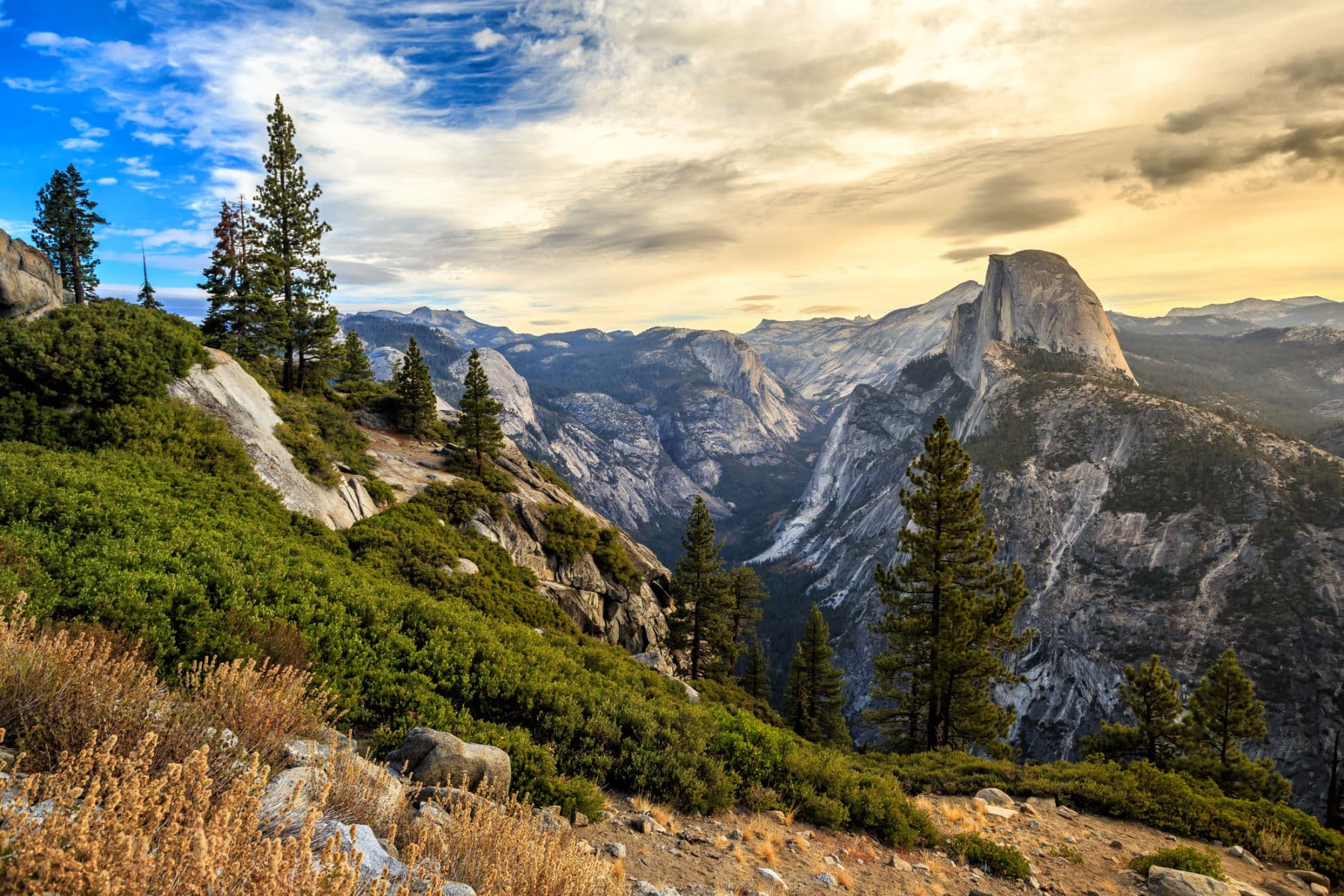
Fall in Yosemite
PROS: Full access to the park is open through October, barring an early winter storm. Crowds are smaller after Labor Day but still busy through the end of October. Fall foliage is in full display, but don’t expect too much out of this due to the number of evergreen trees here. It’s still a pretty sight.
CONS: The waterfalls will be a bust, with just a trickle at most locations. Temperatures wildly fluctuate. Snow can fall as early as September in higher elevations (but that might be a pro for some of you). Tioga Road has closed as early as mid-October.
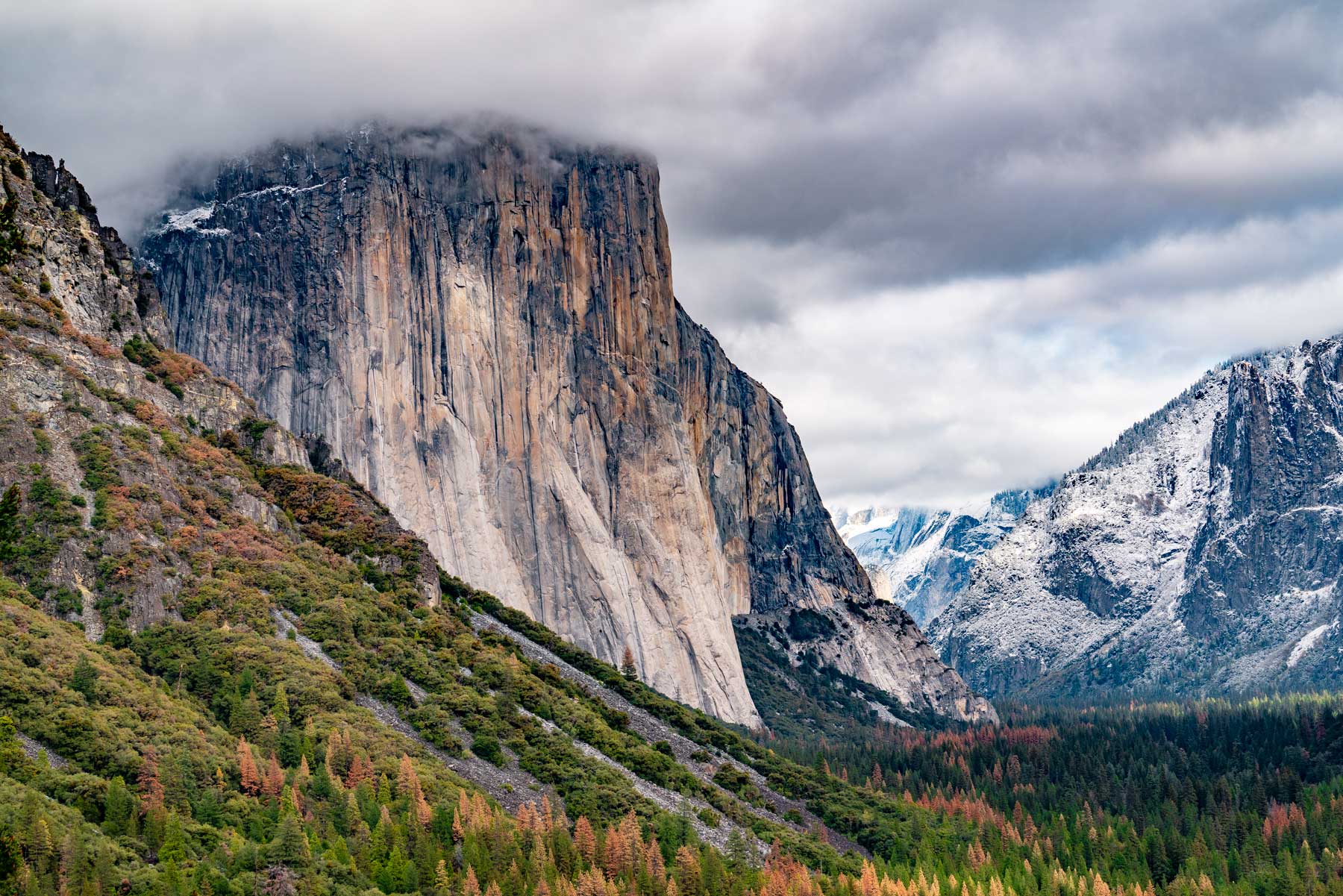
Winter in Yosemite
“I must return to the mountains to Yosemite. I am told that the winter storms there will not be easily borne, but I am bewitched, enchanted, and tomorrow I must start for the great temple to listen to the winter songs and sermons preached and sung only there.”
– John Muir
PROS: Smaller crowds make this feel like your own winter wonderland. Waterfalls might pick up a bit as snow and rainfall. Fluctuating temperatures can also help with better waterfall views, but you won’t get spring-like surges. Badger Pass Ski Area is open to skiers, snowboarders, and tubers.
CONS: Tioga is closed from Crane Flat to Tioga Pass. The road to Glacier Point will close around mid-December. Tire chains will be required to be in your car at all times, even if it’s not snowing. Many trails will be closed or dangerous due to snow and ice accumulation.
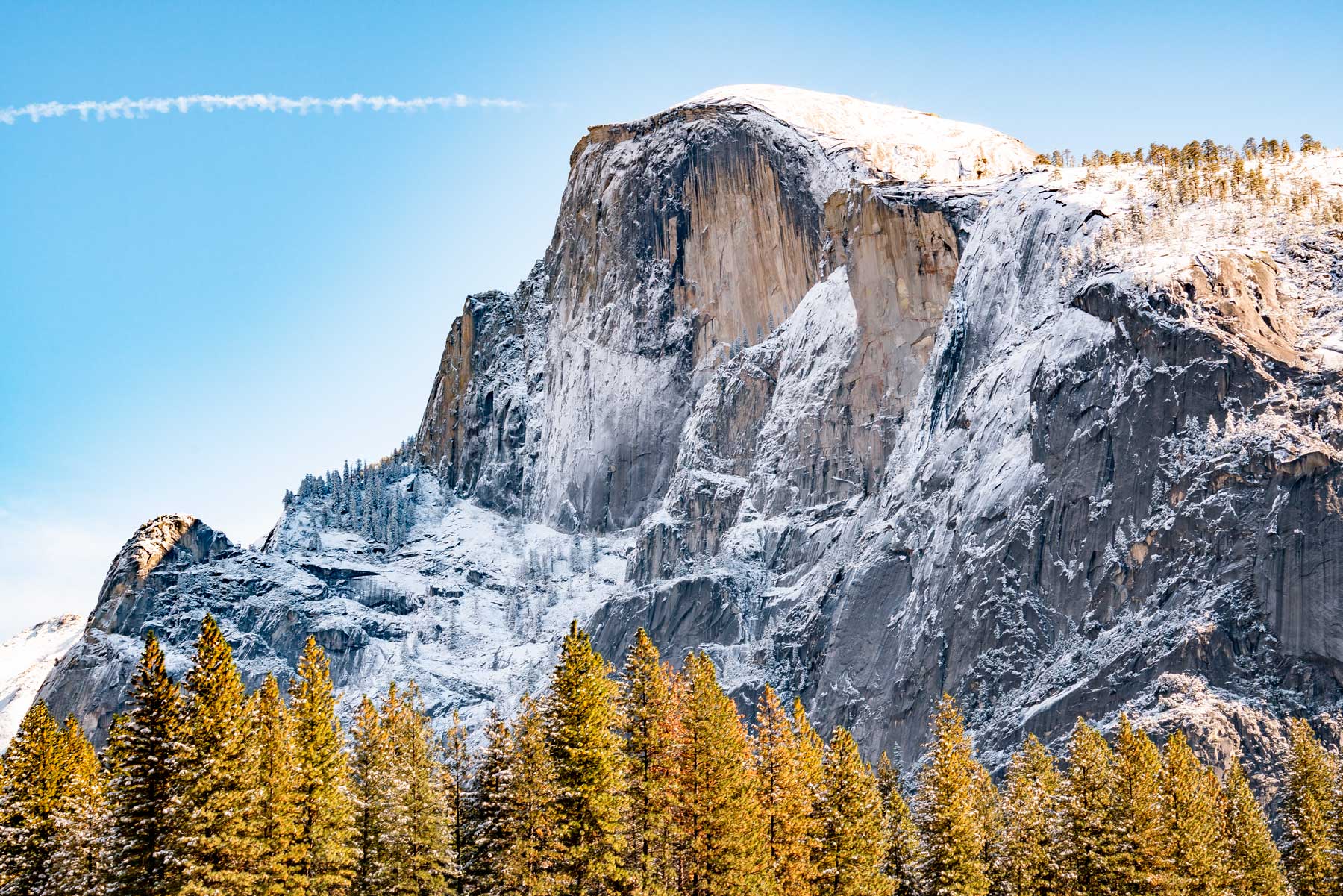
Spring in Yosemite
PROS: Waterfalls pop back to life as the snow begins to melt, but the Sierra Nevada Mountains don’t abide by the calendar for the weather. I’ve had plenty of late spring ski adventures in the Sierras. The free shuttles in the park start back up around April. Skiing and snowshoeing are still popular activities.
CONS: Many trails will still be snow-packed. Yosemite Valley, Wawona, and Hetch Hetchy can be clear of snow by mid-April, barring an epic winter as we saw in 2022/2023. Tioga Road is still closed through at least April and likely into May.
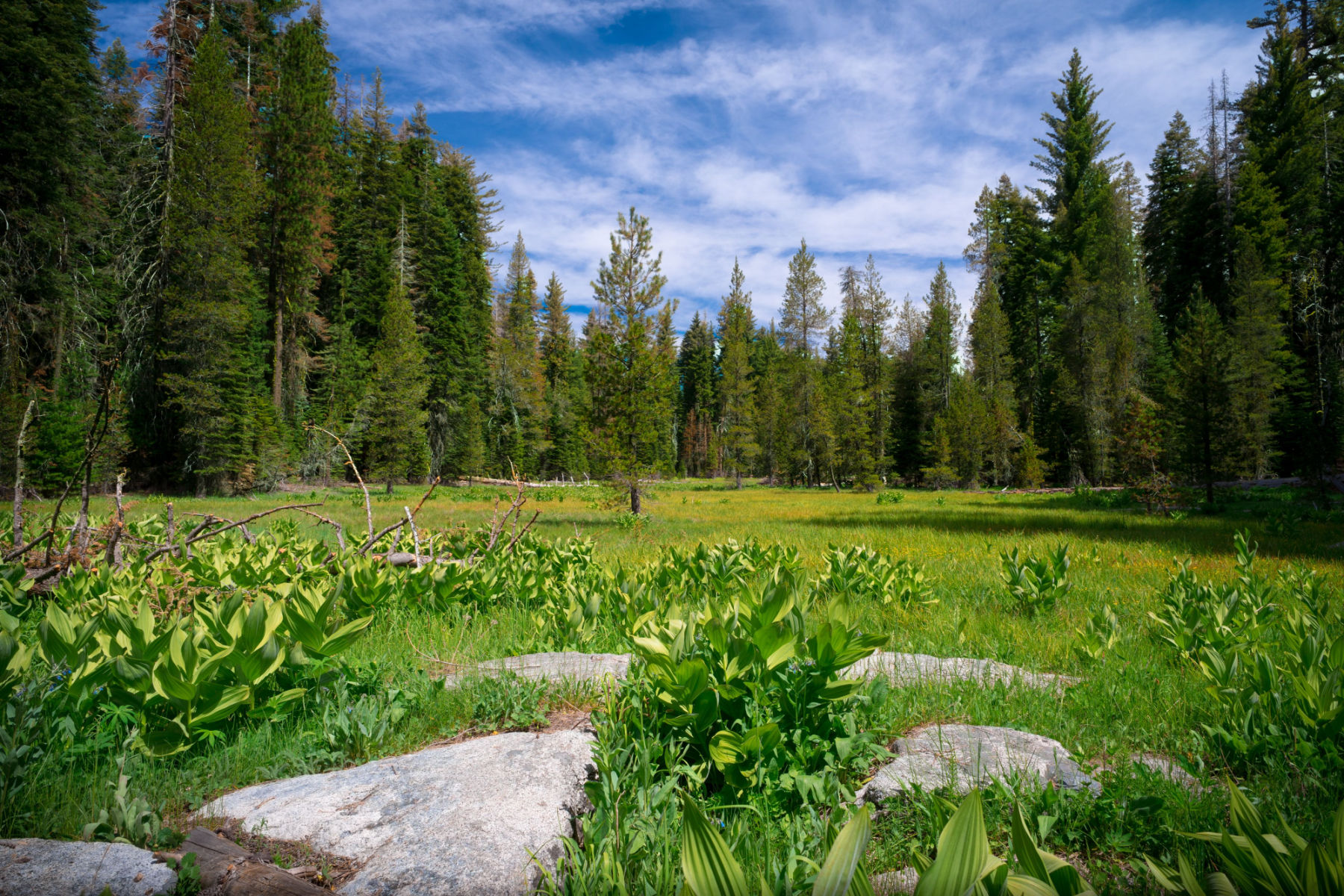
Yosemite Terms to Know
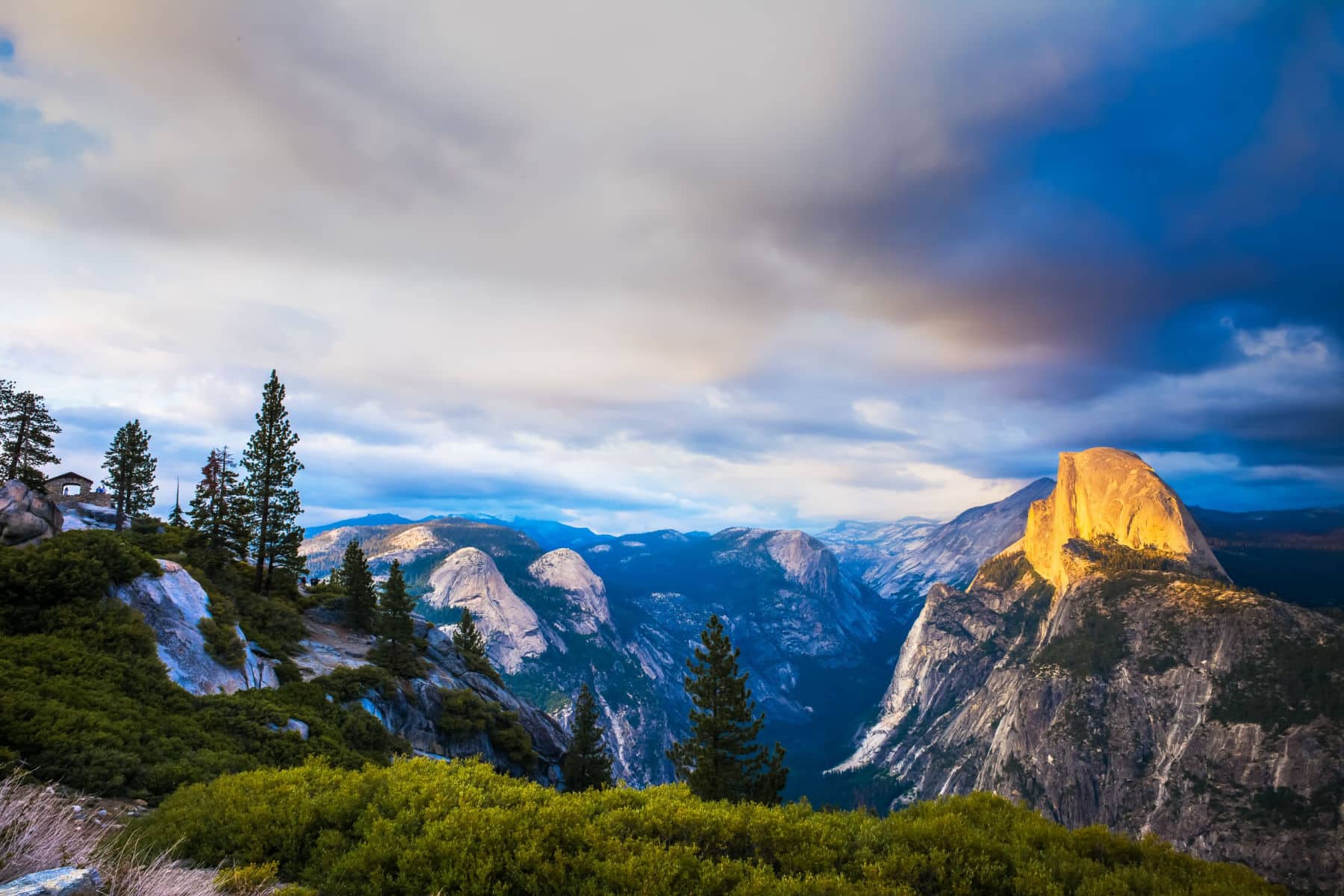
It will help to know a few phrases when navigating Yosemite, mostly because you’ll know what to look for when crafting your itinerary.
Frazil Ice
Most common in spring (April), frazil ice is created when waterfall mist freezes and drops into the rivers. It creates a slushie appearance like you’d get at the summer shaved ice stand.
Ice Cone
A frozen tower of ice forms around Upper Yosemite Falls. Ice can stack as high as 25 stories! Winter is the best season for this, and the cone is gone by April.
Moonbow
The lack of light pollution and the brightness of a spring full moon creates a spectacular moonbow, also known as a lunar rainbow, as the base of Yosemite Falls. This is hit or miss because you need the mix of the full moon and clear skies.
Firefall/Horsetail Fall
Every year in late February, people come from all over the globe for a chance to see this incredible natural phenomenon. The brilliance of the waterfall pouring down from El Capitan can turn fiery orange in the sunset with just the right combination of factors.
NOTE: This site is so popular that reservations are required during three weekends in February when crowds are huge for this event.
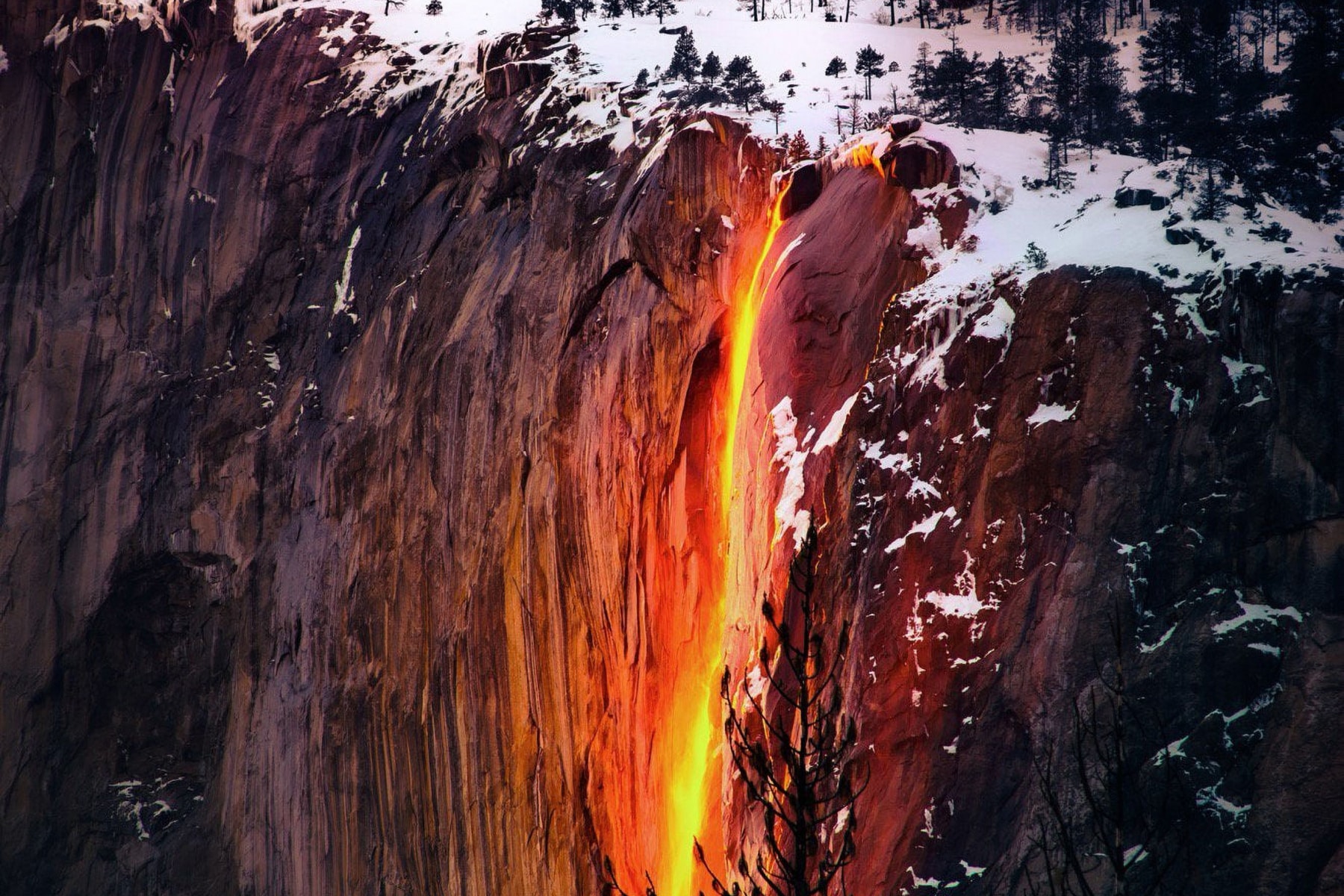
Big Wall Climb
A Big Wall Climb is rock climbing that takes more than a day to complete. At night, you can see the headlamps of climbers handing off El Capitan. They use a platform attached to the rock and ropes to sleep hundreds or thousands of feet above the ground. A wilderness permit is required for big wall climbs.
The Bermuda Triangle of Yosemite
This is a nickname for the picturesque Tenaya Canyon. Many people believe in the Curse of Tenaya Canyon, which is where the Bermuda Triangle reference comes in. Legend has it a curse was placed on the canyon in the 1850s by an Indigenous chief mourning the loss of his son, killed by settlers trying to claim the land.
“… you shall not live in peace, I will follow in your footsteps, I will not leave my home but be with the spirits among the rocks, the waterfalls, in the rivers and in the wind; wheresoever you go, I will be with you. You will not see me, but you will fear the spirit of the old chief and grow cold.”
– Chief Tenaya’s Curse on the Canyon
Even John Muir, the “Father of National Parks,” tumbled his way to a close call with death.
He wrote, “(I) was ascending a precipitous rock front… when I suddenly fell… After several somersaults, I became insensible from the shock, and when consciousness returned, I found myself wedged among short, stiff bushes, trembling as if cold, not injured in the slightest.”
If you are adding Tenaya Canyon to your itinerary, whether you believe in curses or not, even the Yosemite Park rangers warn, “A trip into the unforgiving terrain of Tenaya Canyon, in particular, should not be taken lightly; careful planning and preparation is critical.”
Top Things to Do in Yosemite
Your Yosemite itinerary largely depends on knowing what your options are and what to see.
Waterfalls
It’s not all about Yosemite Falls, as there are dozens of waterfalls. Some don’t even have names. The most popular are:
- Yosemite Falls (2,425 ft)
- Sentinel Falls (approx. 2,000 feet)
- Ribbon Fall (1,612 feet)
- Horsetail Fall (1,000 feet)
- Bridalveil Fall (620 feet)
- Nevada Fall (594 feet)
- Vernal Fall (317 feet)
- Illilouette Fall (370 feet)
- Wapama Falls (1,400 feet)
- Chilnualna Falls (about 2,200 feet)
WATCH NOW: See a live stream of Yosemite Falls while you’re planning your Yosemite itinerary.
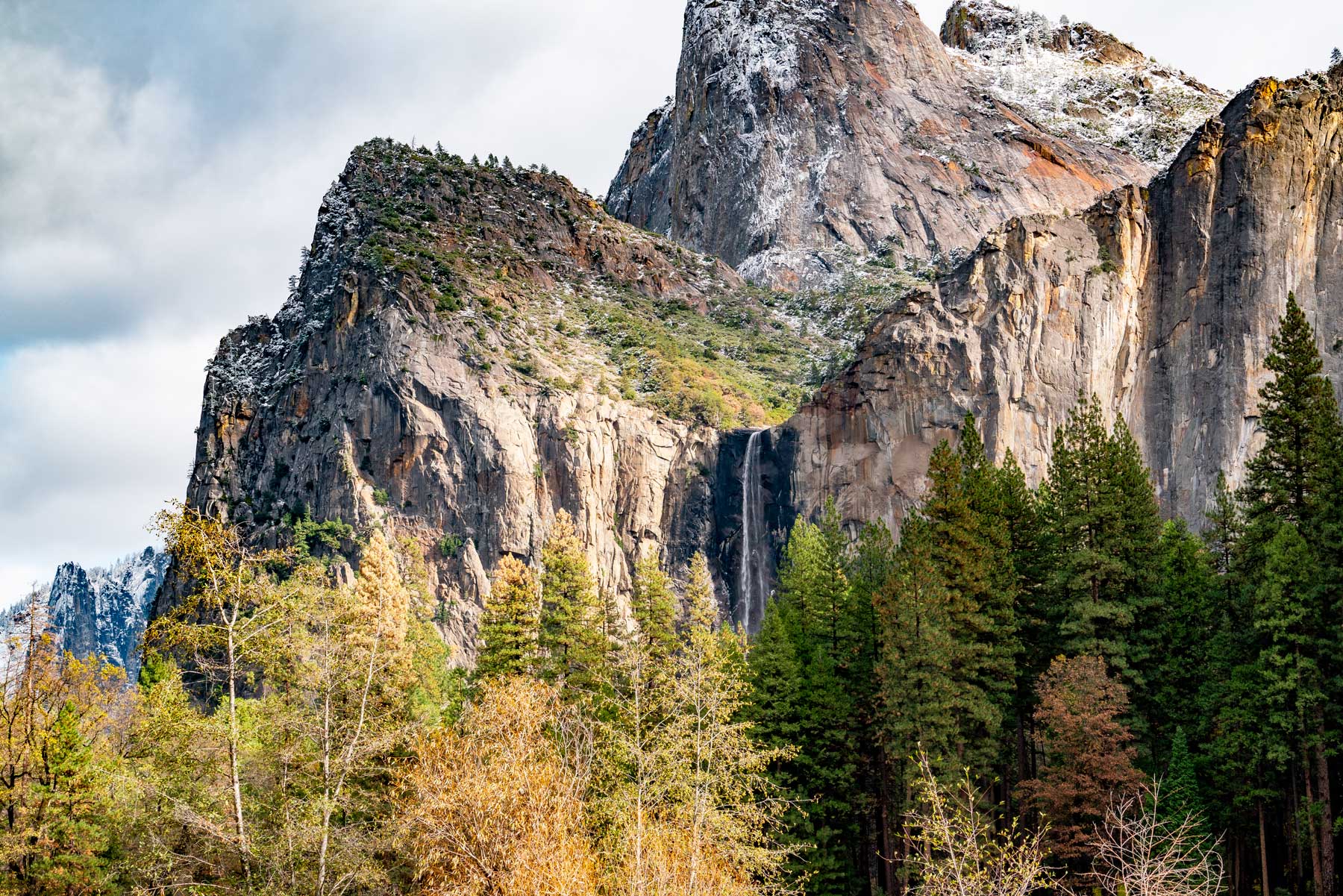
Scenic Rock Formations
You’ve likely heard of the epic Half Dome and the wild cliff of El Capitan, but Cathedral Rocks, Three Brother, Sentinel Rock, and Glacier Point are other top destinations for cool rock outcroppings. Mount Lynell is the highest peak in Yosemite at 13,114 feet above sea level.
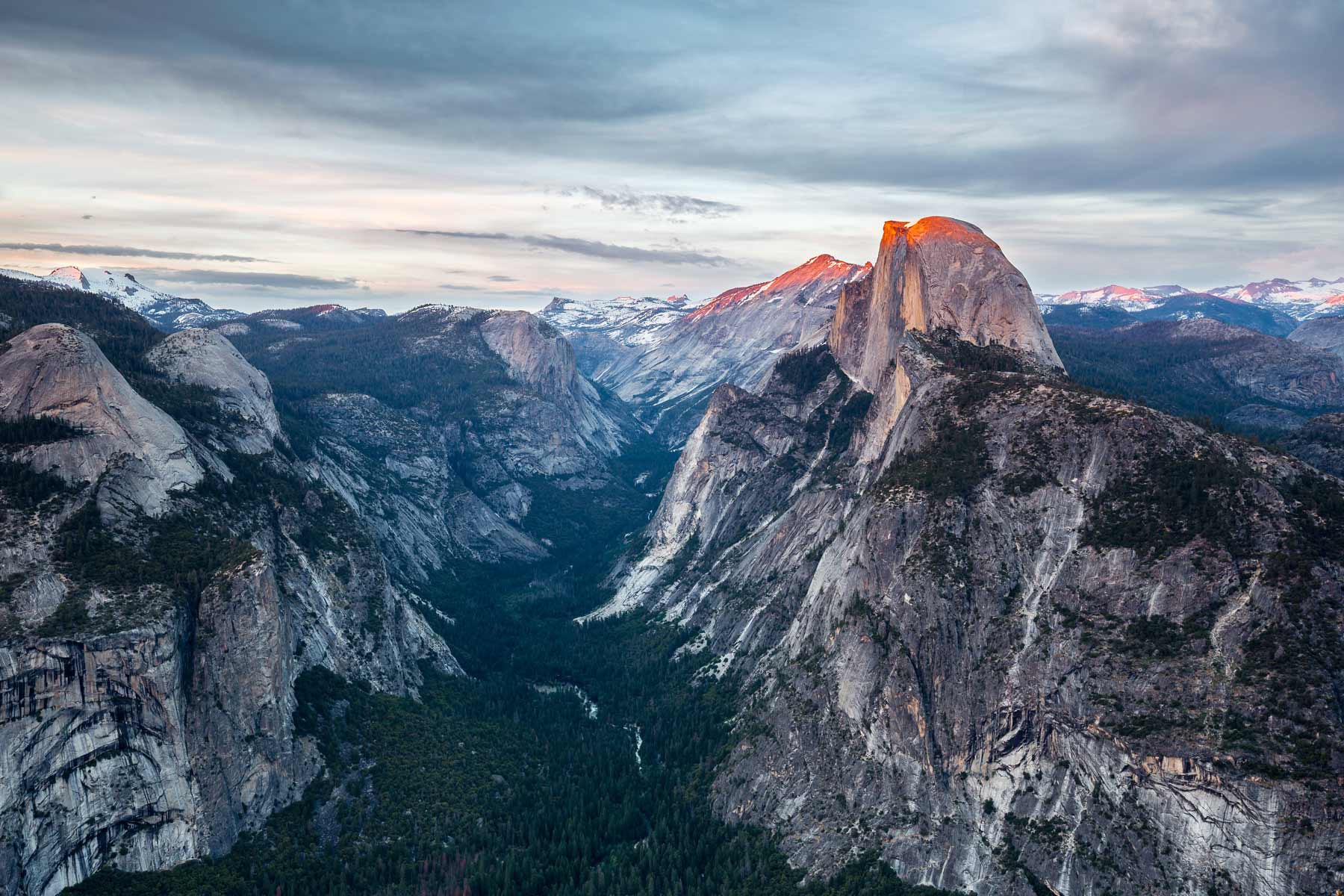
Super-Sized Sequoias
Yosemite and Sequoia National Park are 140 miles apart, but you don’t have to go the distance to see the massive trees. Mariposa Grove, Tuolumne Grove, and Merced Grove in Yosemite have plenty to see. This is the only place on the planet where these trees grow naturally, and they are susceptible to wildfire, as we’ve seen too many times over the past decade.
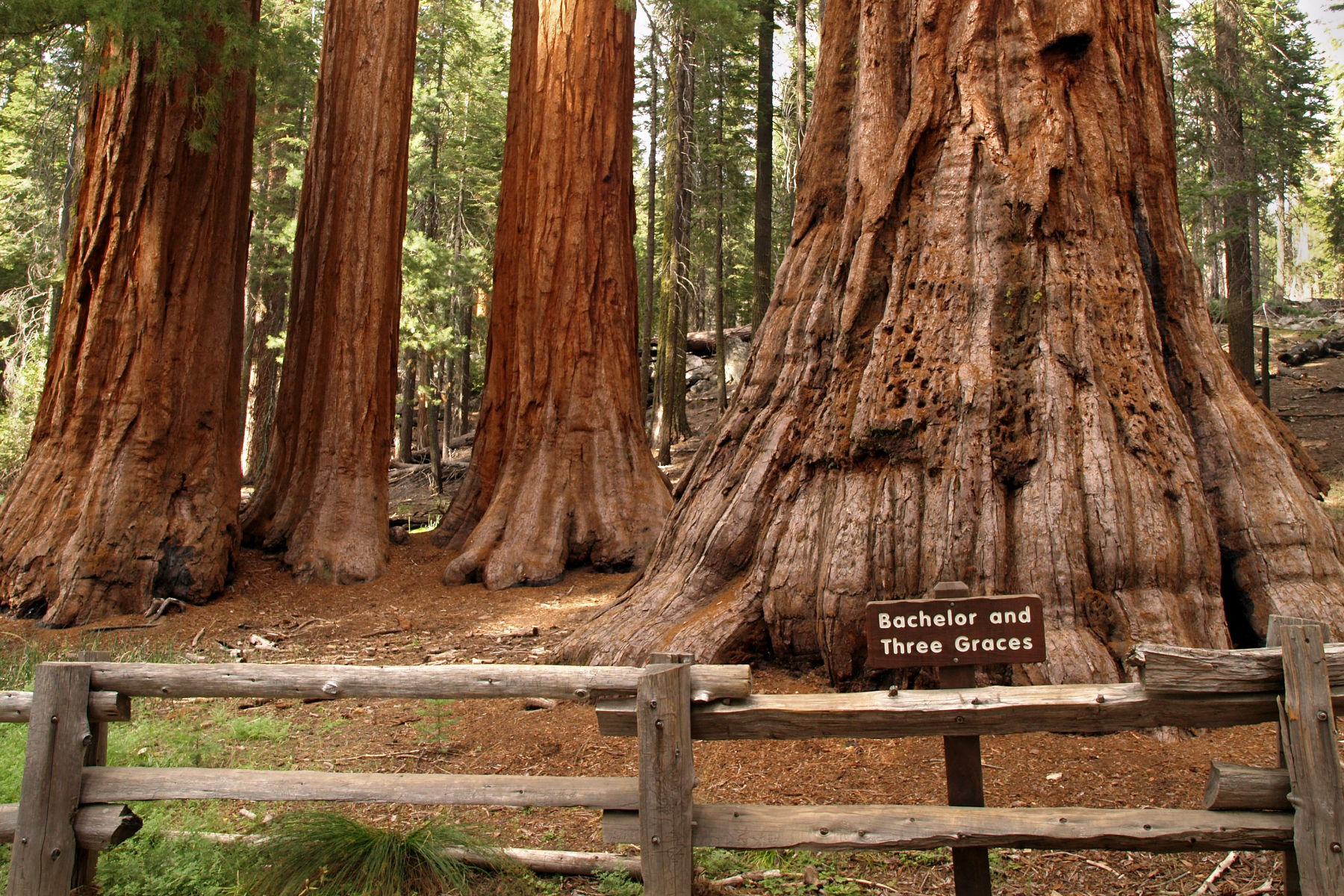
Scenic Views
“Climb the mountains and get their good tidings. Nature’s peace will flow into you as sunshine flows into trees.”
– John Muir
Yosemite’s views are legendary, and the view can be just as good looking up as it is looking down or out (just in case you’re afraid of heights, you still get a great show).
- Glacier Point
- Tunnel View
- Olmstead Point
- El Portal
- O’Shaughnessy Dam
- Pothole Dome
- Lembert Dome
- El Capitan Meadow
- Valley View
- Sentinel Meadow
- Yosemite Chapel
- Sentinel Bridge
- Lower Yosemite Fall
- Half Dome
Beautiful Blooms and Meadows
Crane Flat is one stop on the way to Tuolumne Meadows. It’s also a great sledding area in the winter. In the meadows, the spring flowers are captivating, while the trails transition to cross-country skiing in the winter.
Wawona is a cultural gem surrounded by more Yosemite beauty. The Victorian-Era Wawona Hotel is located here.

Rock Climbing
You shouldn’t just show up at Yosemite and say, “I want to go rock climbing,” but you can take some lessons or practice in your hometown while you’re planning your Yosemite Itinerary. Yosemite is home to some of the best cliffs worldwide. I didn’t even know in my early adventurer days that rock climbing could be a multi-day event until I came to Yosemite.
Rock climbing challenges like fixed ropes, bouldering, slacklining, and bolting are available here. HINT: If you don’t know what those things are, you definitely need lessons and practice.
Half Dome
The apex of all hikes in Yosemite is to tackle Half Dome, but you’ll need a permit to do it. Hikers can only ascend Half Dome when the cables are up, usually the Friday before Memorial Day through the second Monday in October.
- If you are only hiking Half Dome, apply for the seasonal and daily permit lottery here.
- If you want to hike Half Dome as part of an overnight wilderness trip, which also requires a permit, bundle those up by visiting this website.
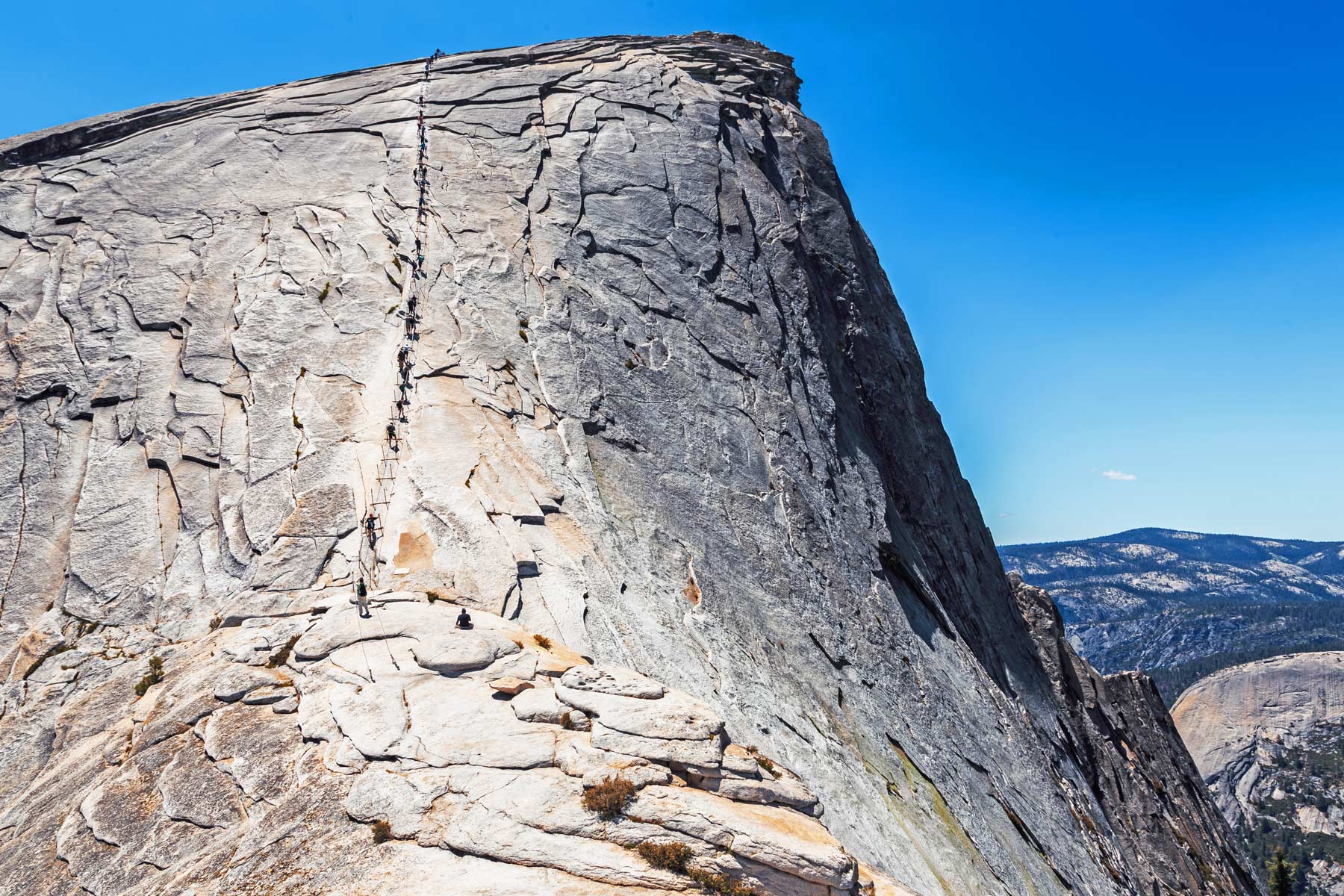
Fishing
Yosemite has great fishing opportunities throughout the park. You’ll need a fishing license and details of the fishing locations, rules, and restrictions. Rivers and lakes like the Merced River, Tuolumne River, Frog Creek in Hetch Hetchy, Adair Lake, and Hanging Basket Lake are all popular stops.
TRAVEL TIP: Know the fish consumption advisories before you fish in Yosemite.
Accessible and Limited Mobility Options
Yosemite is just as breathtaking from the road as the wilderness. Bus tours are available, with some tram tours open seasonally. You can explore the Valley Floor and Glacial Point or take an eight-hour Grand Tour in the summer that hits Yosemite Valley, Glacier Point, and the sequoias.
Scenic drives, or “Auto Touring,” as our friends at Yosemite call it, is another great way to see it all from climate control.
MORE: Details of all accessible and adaptive programs and places in Yosemite National Park.
Yosemite Shuttle System
Yosemite offers many ways to get around, including the free Yosemite Valley Shuttle System and the Easy Valley Shuttle. There’s also the Mariposa Grove Shuttle, a free ride to Badger Pass Ski Area, Tuolumne Meadows Shuttle, and a fee-based YARTS system.
Check out the Yosemite Shuttle System page on the park’s website here.
FAQs for Visiting Yosemite
Yes, the Merced River is a popular place to cool off, raft, kayak, or boat. Tenaya Lake is another calm body of water. Note that swimming is not allowed in these locations: Hetch Hetchy Reservoir, Dana Fork of the Tuolumne River, Emerald Pool and Silver Apron, Lake Eleanor Reservoir (check for updates), 100 yards upstream from and in Wawona Domestic Water Intake.
Yes, there are as many as 500 black bears in the vicinity of Yosemite National Park. There are no grizzly bears in California. The iconic California Grizzly Bear has been extinct since 1924, giving California the unique distinction of being the only state in the U.S. to feature an extinct animal on its flag.
Yes. It’s frankly worse than you can imagine during the busiest times. Yosemite Valley, Glacier Point, Tuolumne Meadows, and Mariposa Grove have the worst traffic troubles. Get there early or arrive in the late afternoon.
Absolutely! Arriving in the morning and staying for the day is still a great way to see the park if you’re short on time. You’ll want to plan ahead of time to prioritize the sights that are most important to you. You can do that here.
Early October is a great time to visit Yosemite when all the roads are open, the weather is nice, and kids have gone back to school, reducing the crowds. Make sure to check on the fire conditions ahead of time, though.
Yes. Getting into Yosemite is the most frustrating part of any trip to the park. Staying at a lodge or campground inside the park will allow you to avoid wasting hours in long lines to get into the park each day.
Four days is the sweet spot for Yosemite. With four days in the park you have time to visit the distinct regions of the park, tackle some longer iconic hikes, and soak in the majesty of one of the most beautiful places on earth.
Flexibility is Key in Yosemite
We saw in 2023 just how much the winter weather can impact the summer tourism crowds. Yosemite had one storm in March 2023 that dropped 15 feet of snow—and that’s just ONE storm. That storm closed all access to the park, caused flooding well into summer, and left many areas usually open by May still closed down.
Pencil in your itinerary, and be prepared to pivot as needed. You really don’t have a bad seat in the entire park.
“Yosemite Valley, to me, is always a sunrise, a glitter of green and golden wonder in a vast edifice of stone and space… The great rocks of Yosemite, expressing qualities of timeless yet intimate grandeur, are the most compelling formations of their kind. We should not casually pass them by, for they are the very heart of the earth speaking to us.” — Ansel Adams
Pin This Yosemite Itinerary



Helpful Related Articles
Things to Do in Yosemite: 20 Epic Things to Do in Yosemite National Park
Clouds Rest Hike: Hike Clouds Rest in Yosemite, NOT Half Dome (Honest Guide)
Half Dome Hike: Here’s Why You May Want to Reconsider the Half Dome Hike
Best Hikes in Yosemite: 20 Best Hikes in Yosemite National Park
Yosemite Facts: 10 Shocking Yosemite National Park Facts
Hetch Hetchy: Hetch Hetchy – The Epic Enviro Battle That Changed America
Things to Do Sequoia: 15 Amazing Things to Do in Sequoia National Park
Redwood National Park: Redwood National Park Ultimate Guide
Things to Do Redwood National Park: 15 EPIC Things to Do in Redwood National Park
Death Valley National Park Guide: Death Valley National Park Ultimate Guide
Things to Do Death Valley: 18 EPIC Things to Do in Death Valley National Park
Joshua Tree Guide: Joshua Tree National Park Ultimate Guide
Best Hikes Joshua Tree: 15 Epic Hikes in Joshua Tree National Park
Things to Do Pinnacles National Park: 10 Epic Things to Do in Pinnacles National Park
Redwoods Near San Francisco: 15 BEST Places to See Redwoods Near San Francisco
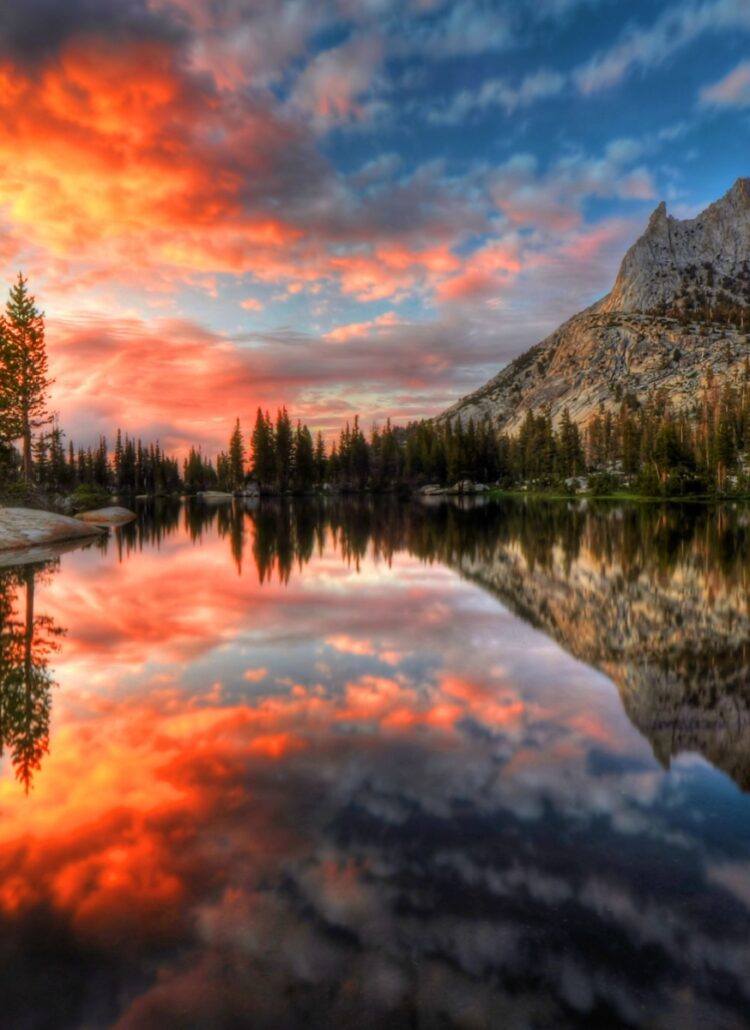
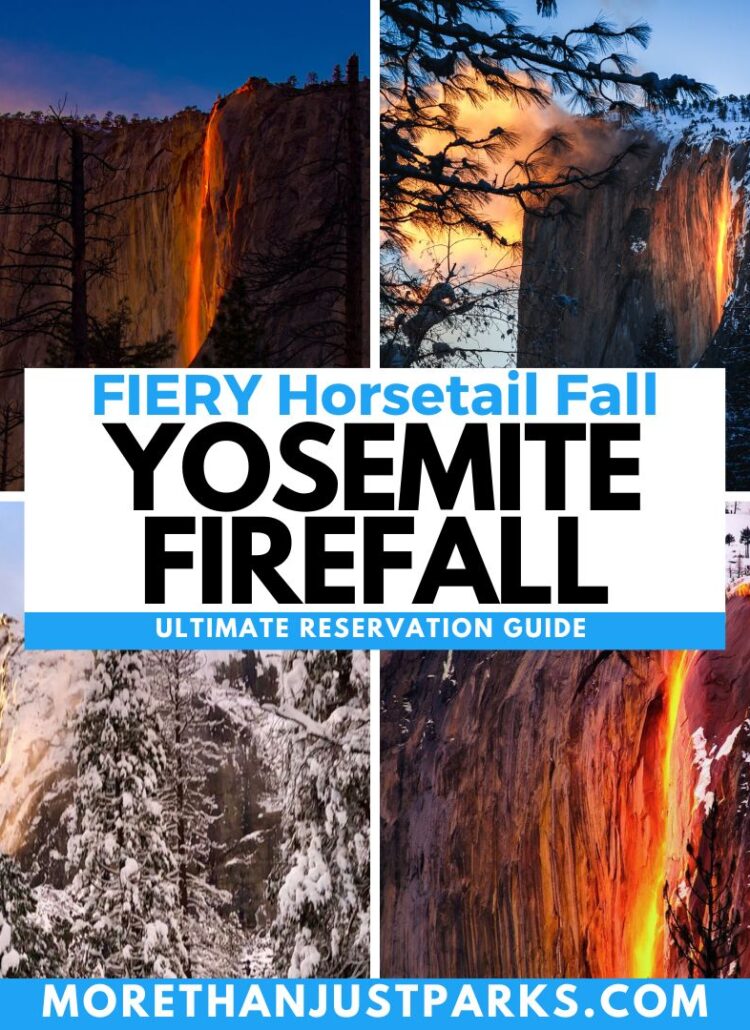
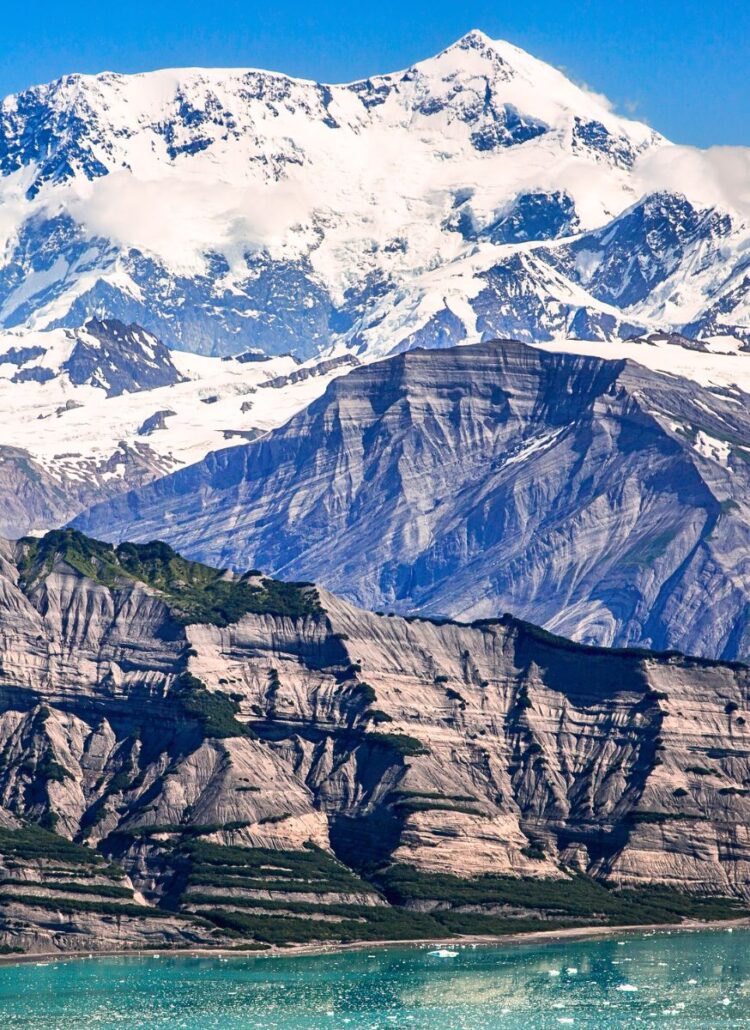
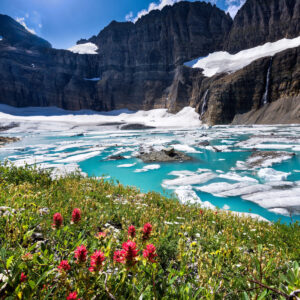

Leave a Reply